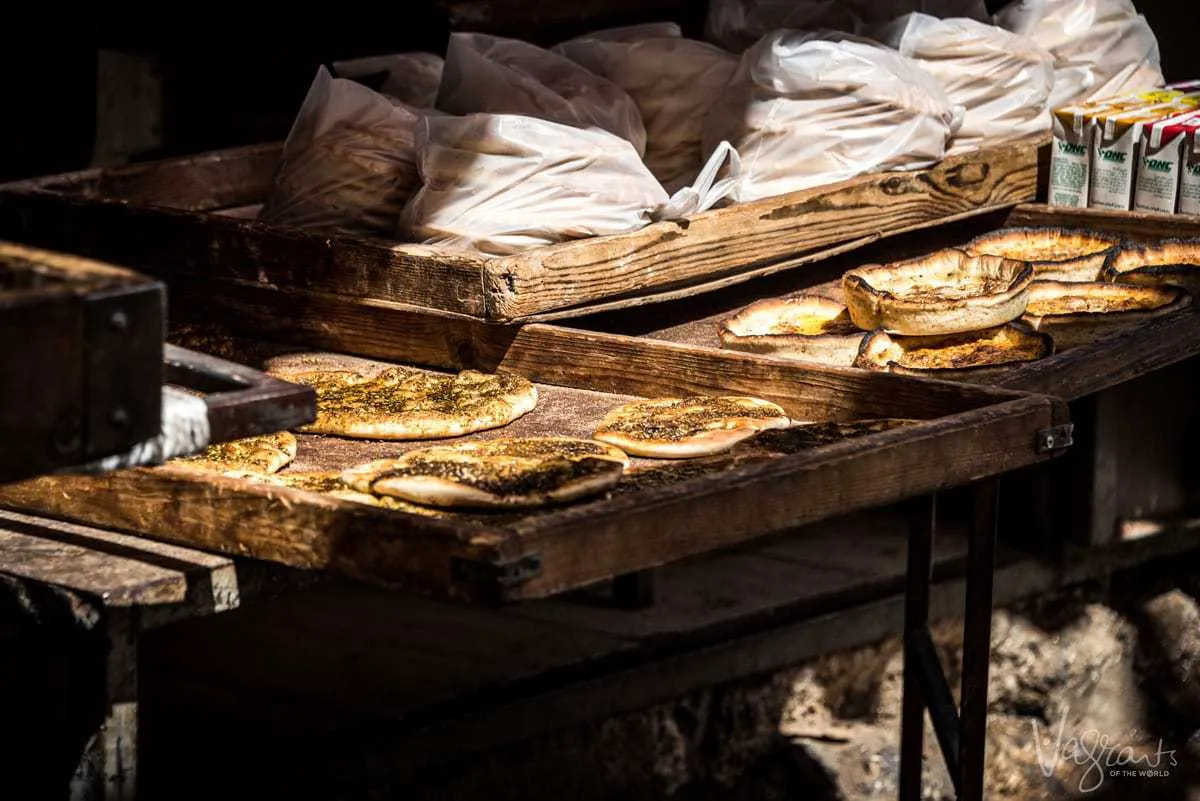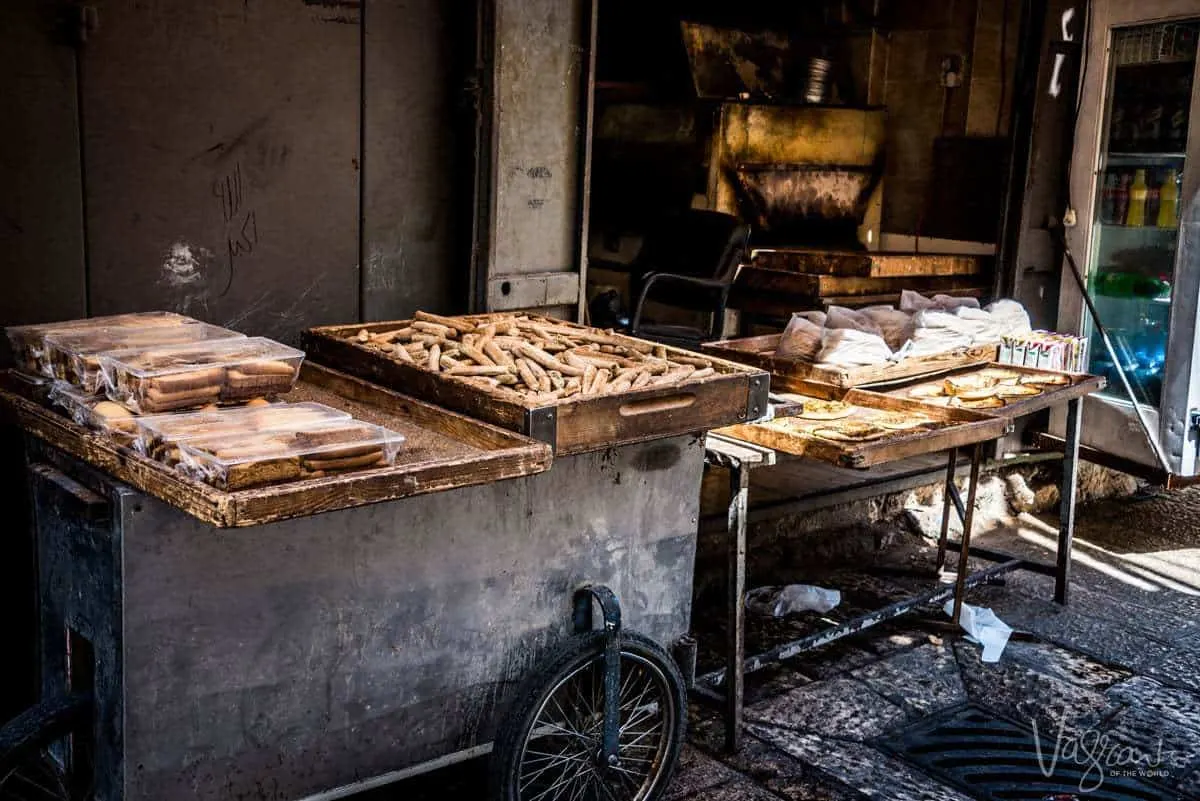Travel in Israel is an Amazing Journey Through the Holy Land
About Travel in Israel
When you consider the history of Israel, you need to stop and contemplate in an attempt to try and comprehend it all. Israel is a long and complex story, one that requires much explanation, a little patience and a dash of open-mindedness.
The importance of this land to Muslims, Jews and Christians, combined with centuries of enduring conflict makes for a very compelling story and an amazing place to visit.
By discovering the best things to do in Israel, you may also unravel some of the country’s complex story. But don’t expect the norm here, there are a plethora of unusual and unique things to do in Israel.
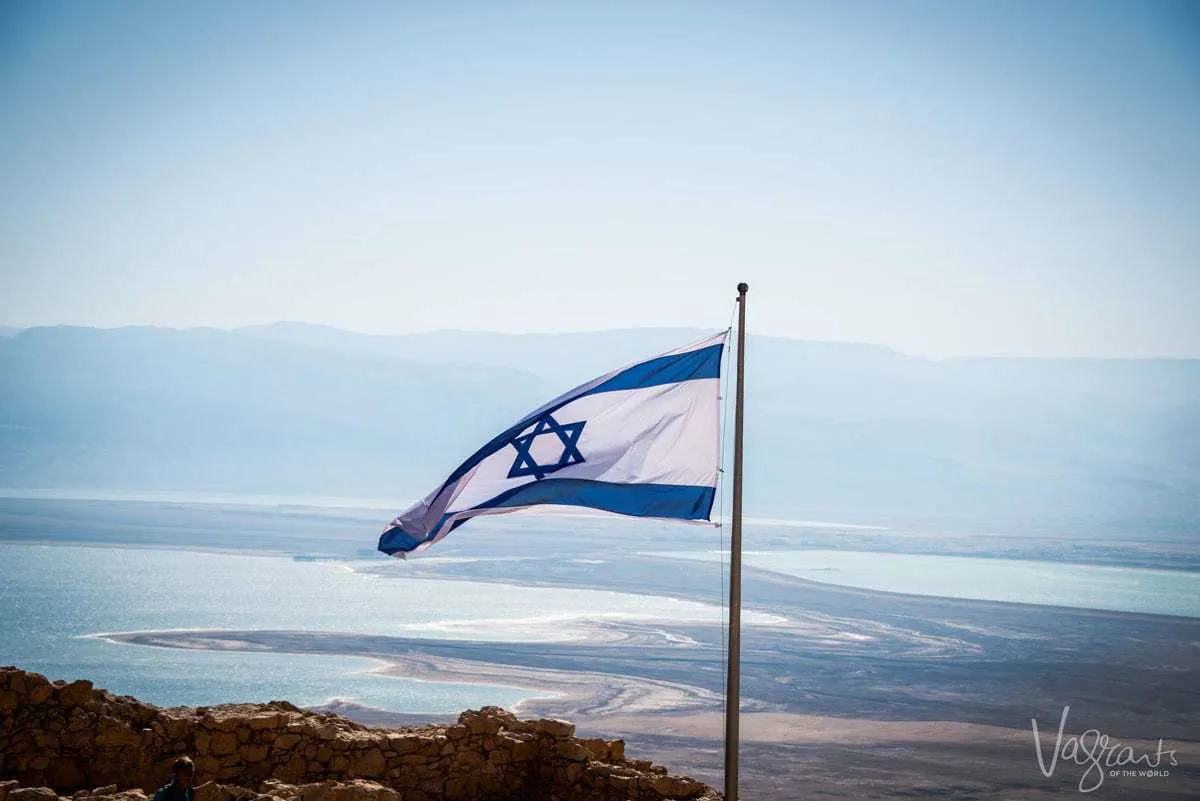
The Diversity of the Israel Experience
For a small and relatively new country, Israel brings together an incredibly eclectic and diverse group of people, some of the holiest and most revered sites in the world and a wide range of dramatic and beautiful landscapes.
Israel has a unique energy. It is both ancient and modern, with vitality and mystique that attracts millions of travellers and pilgrims each year.
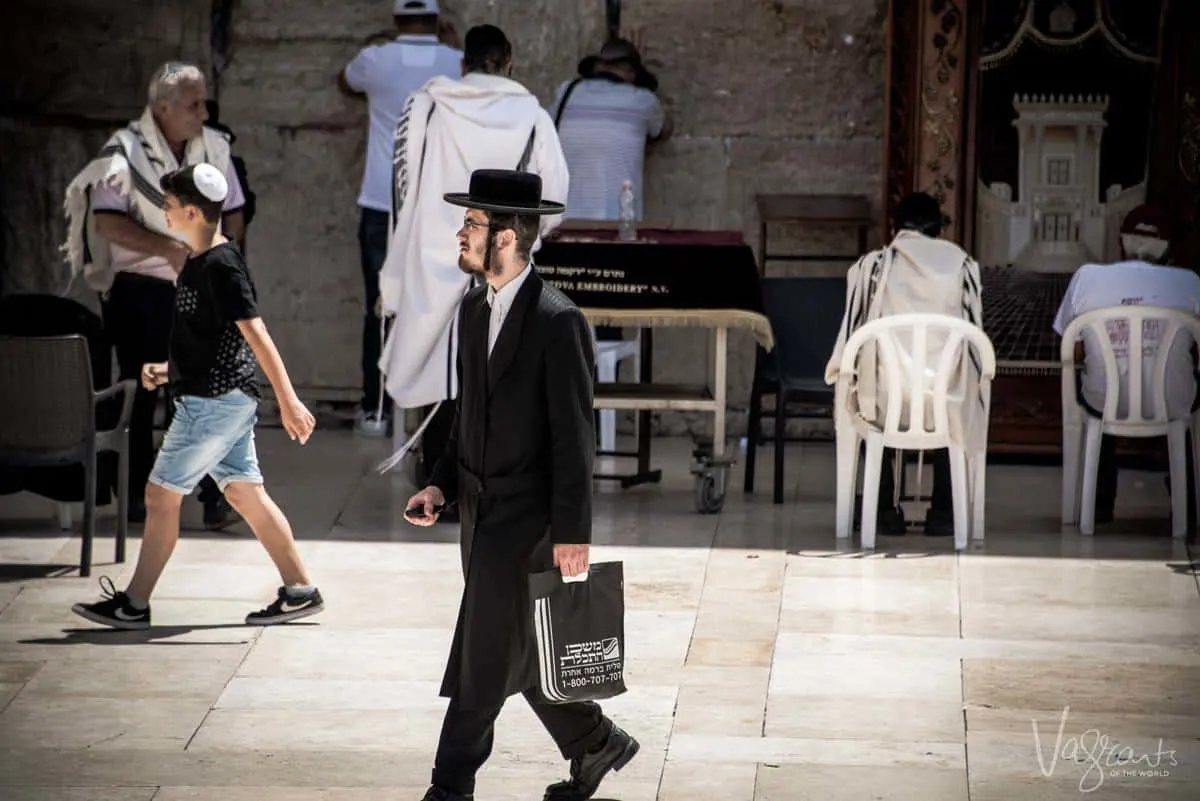
We spent a few weeks travelling through Israel, exploring the country’s most important sights, beautiful landscapes and exciting cities.
We hope to inspire others to see Israel beyond the conflict, beyond the politics and see a destination that is unique and extraordinary. A wonderfully complex country with so much to offer.
Discover More About Travel Through Israel
The Best Things to do in Israel
Meet the People of Israel
The people of Israel give great insight into the complex story of the country. To use the old cliche, Israel is the veritable melting pot of culture. The immense historical and religious significance of this holy land brings with it a myriad of cultures calling this land their own.
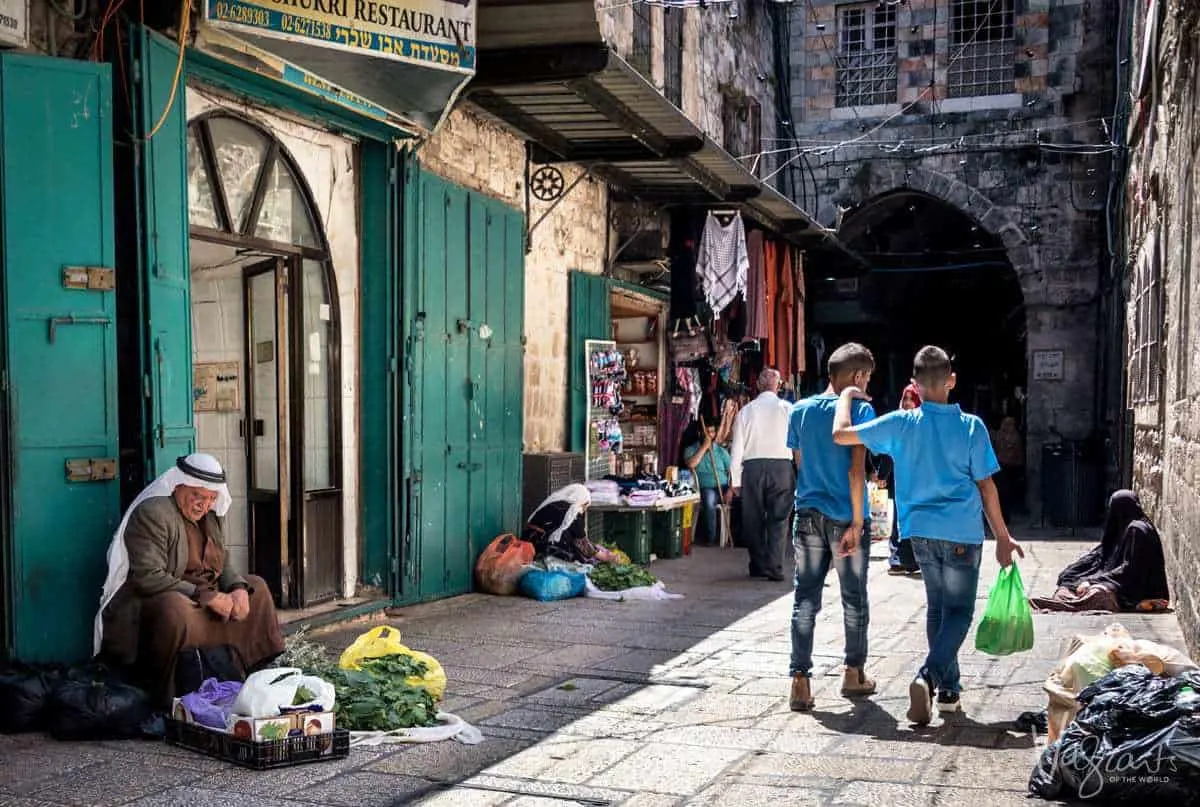
Israel’s diverse and vibrant culture is not merely a by-product of Israel’s complicated history but integral in shaping it. So, while you contemplate the extraordinary historical events that shaped this land over millennia, stop to admire the diversity of people who continue to influence the identity of this unique country.
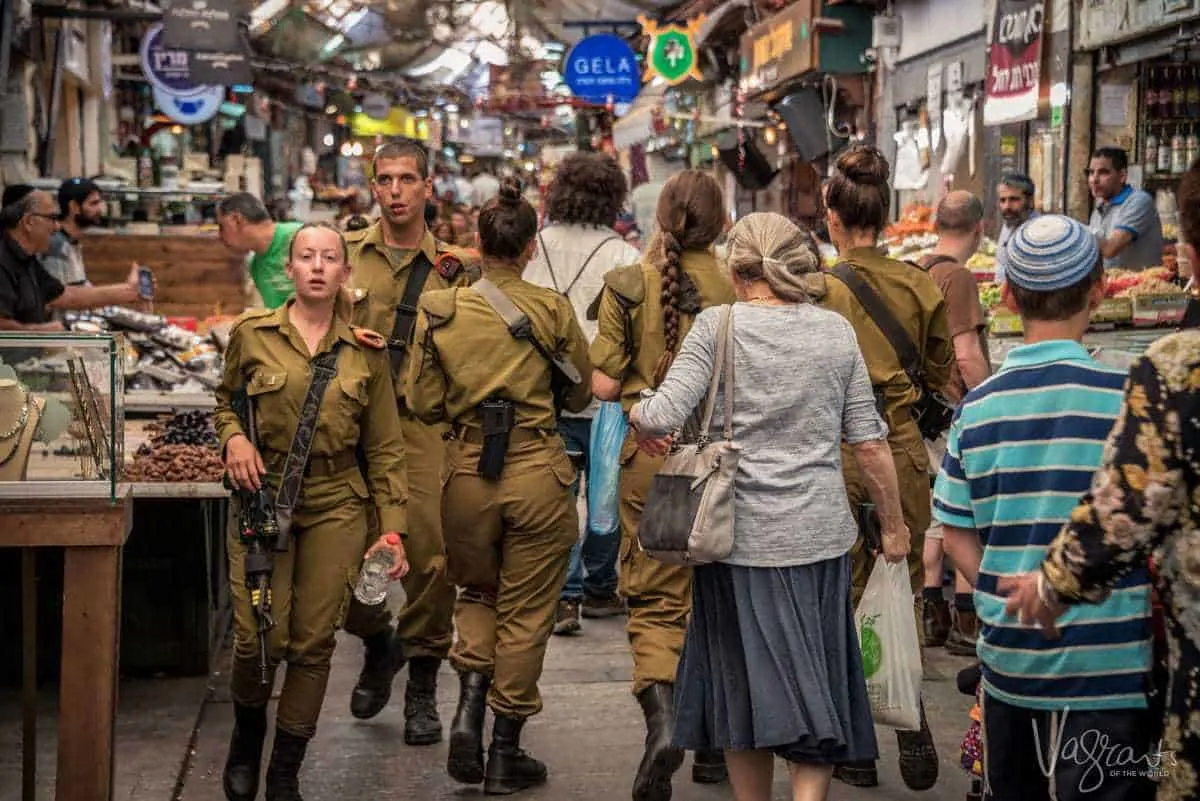

The Old City of Jerusalem
Visiting the Old City of Jerusalem is, without a doubt, one of the top things to do in Israel for both tourists and pilgrims. Israel is unique and complex, especially regarding faith and nowhere is it more complex than Old City Jerusalem.
While predominantly Jewish, faith in Israel comes in many forms and in the Old City of Jerusalem, it shares very close quarters.
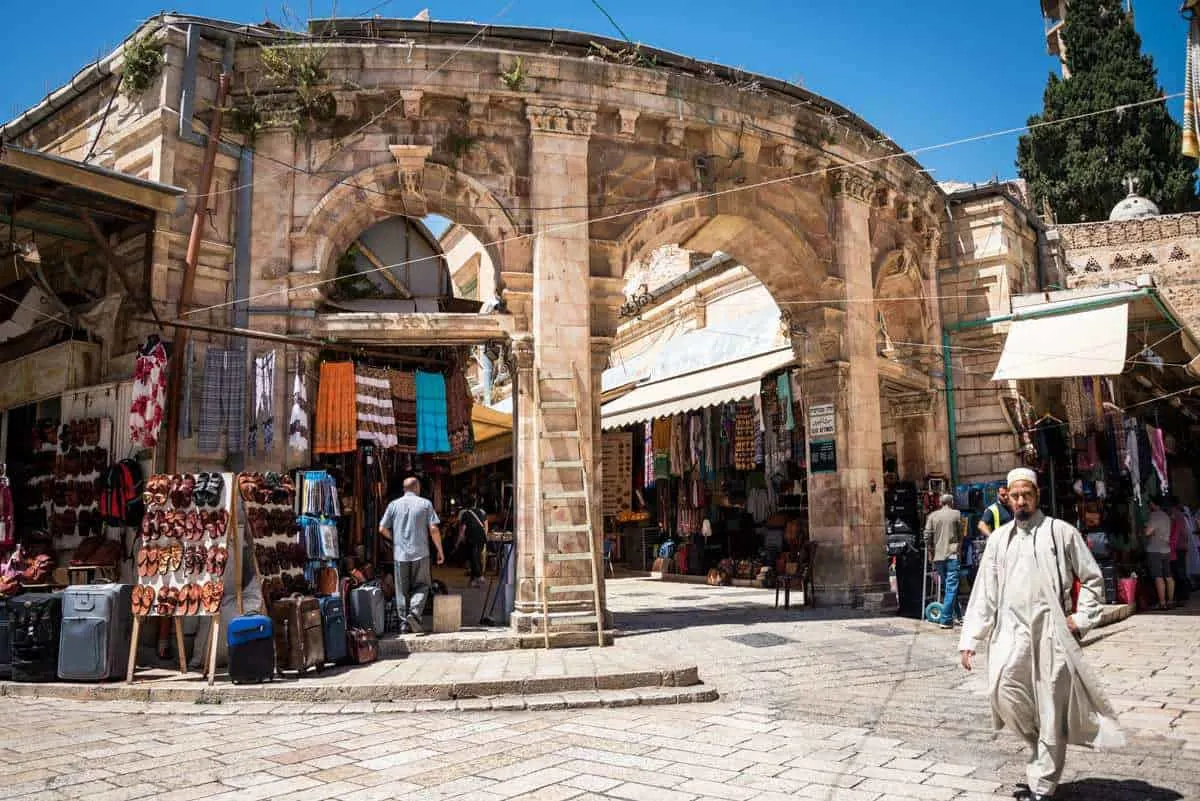
Within the walls of Jerusalem’s Old City; Christians, Muslims, Armenians and Jews share a small walled area of 0.9 square kilometres (0.35 square miles). Of each of these faiths, there are many denominations.
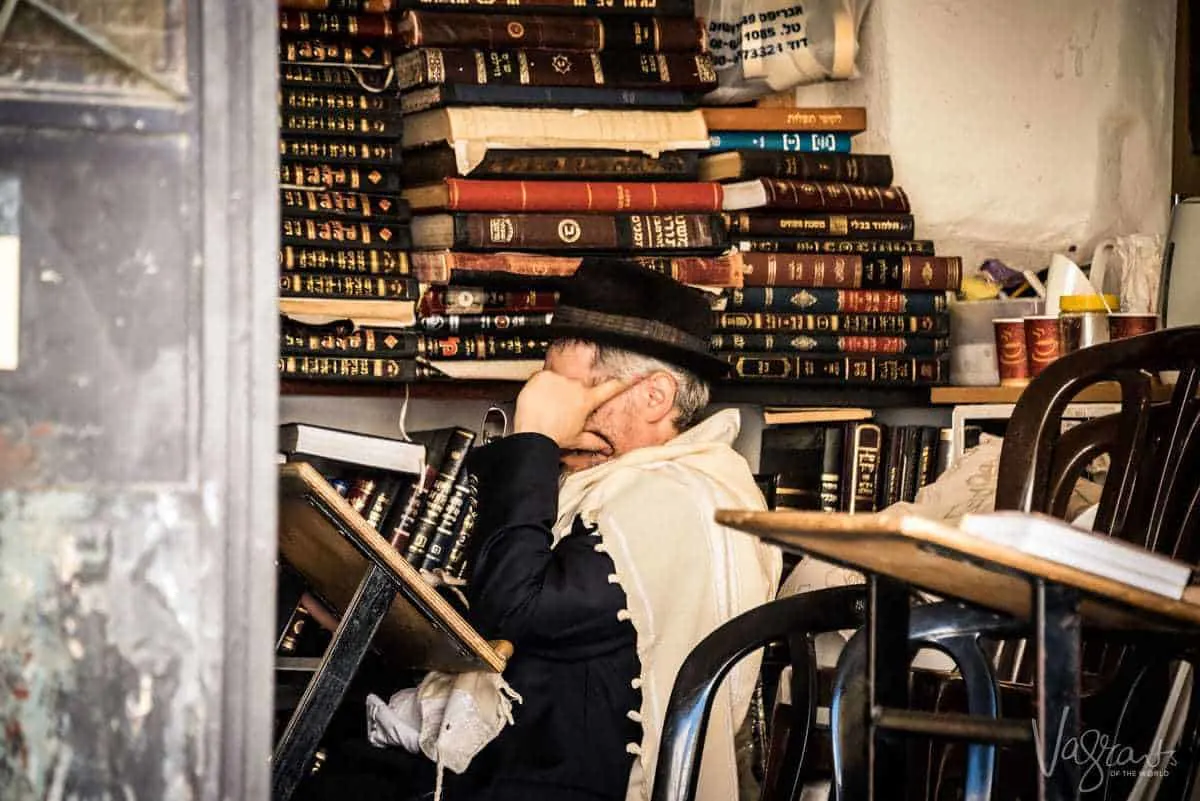
Pilgrimage to the Holy City
With a history deeply rooted in the Jewish, Christian and Muslim faiths, The Holy Land has been a focal point for pilgrims for millennia.
Jerusalem, deemed the holiest city in the world, attracts thousands of pilgrims yearly. They come to complete a spiritual journey, visit the sites Jesus walked, to see and touch the physical manifestations of their faith, and connect personally to the Holy Land.
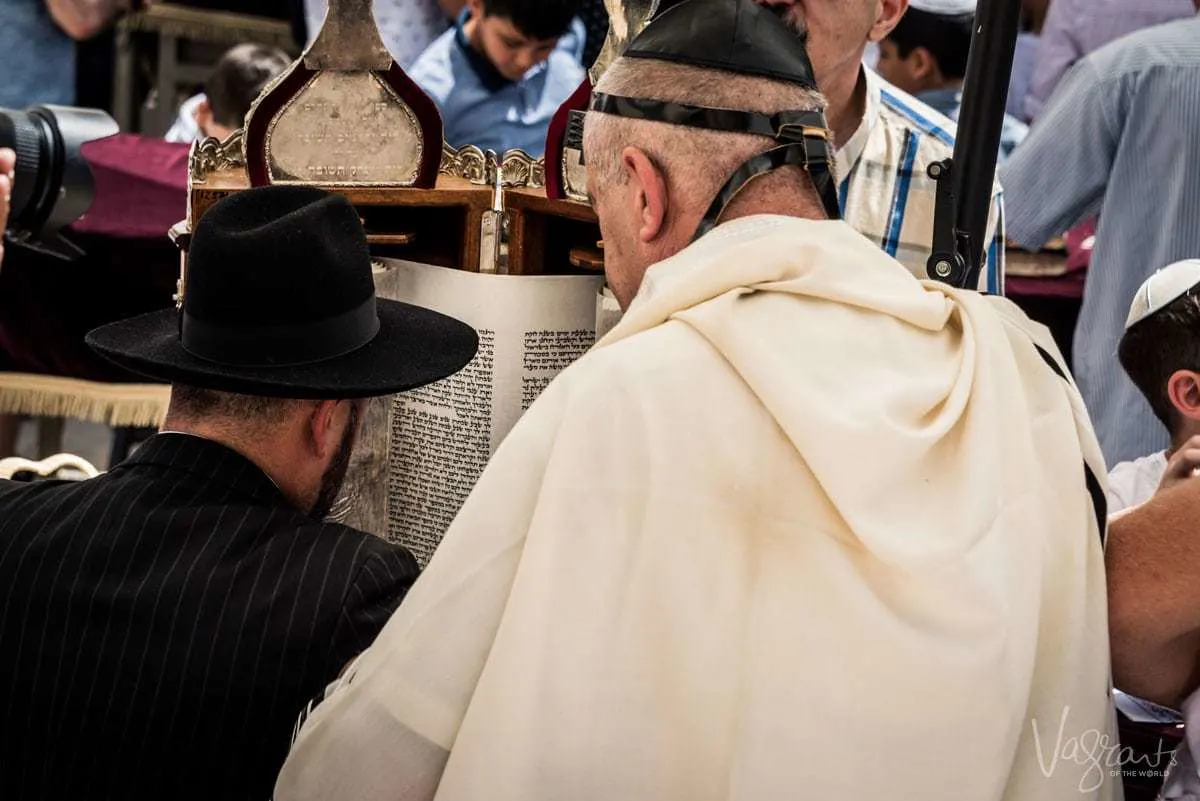
Visit the Most Important Holy Sites in Jerusalem Old City
Religion is an integral feature of Israel, and faith has played a central role in shaping Israel’s history as well as its current culture and lifestyle. Therefore, the most important holy sites in Jerusalem are what many come to Israel to see. These are some of the most revered sites in Jerusalem’s Old City.
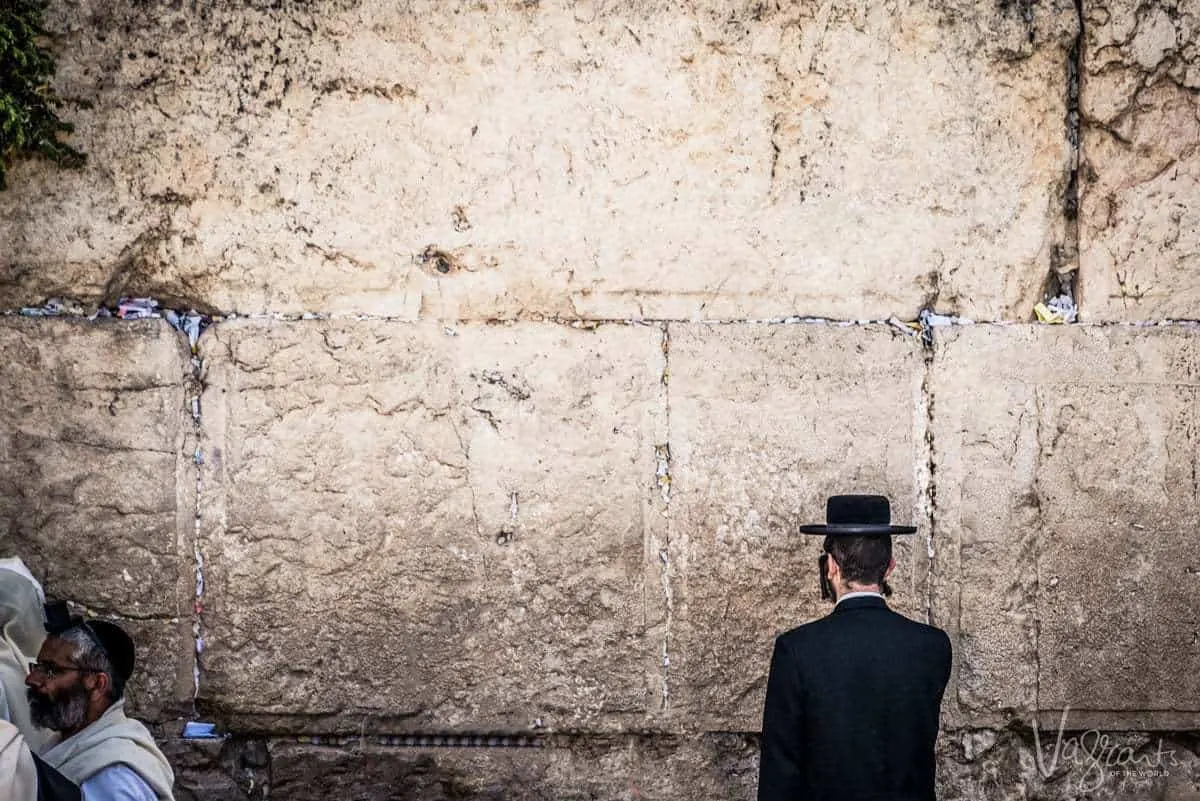
Temple Mount
Some of the holiest sites in Israel are considered sacred by multiple religions. The Temple Mount, known to Muslims as the Haram esh-Sharif (Noble Sanctuary), is one of the most important holy sites in the world. It has been revered as a sacred site by Jewish, Christian, and Islamic faiths for thousands of years. It is also a site of contention and sometimes conflicts.
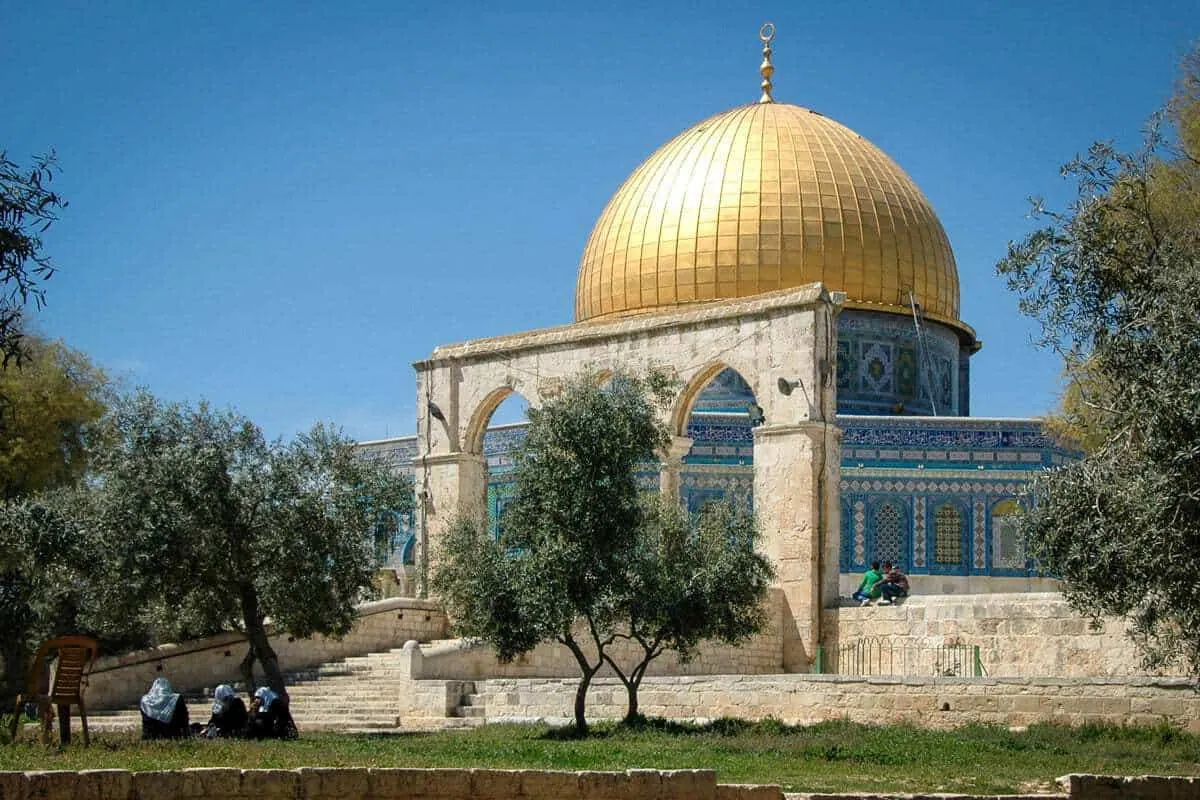
Dome of the Rock
The site of the Dome of the Rock holds great significance for both Muslim and Jewish faiths. The connection for both derives from beliefs around the creation of the world. For Muslims, it is the belief that the rock at the centre of the structure is where the Prophet Muhammad began his Night Journey to heaven.
In Jewish tradition, the rock is the Foundation Stone. The place where the world expanded into its present form and where God gathered the dust to create Adam, the first human. It is believed this is the place where God’s presence is manifested more than in any other.
Visiting Dome of the Rock
Non-Muslim visitors are not allowed to enter the Dome of the Rock but can view the exterior from the Temple Mount courtyard. See further on for details about visiting Temple Mount.
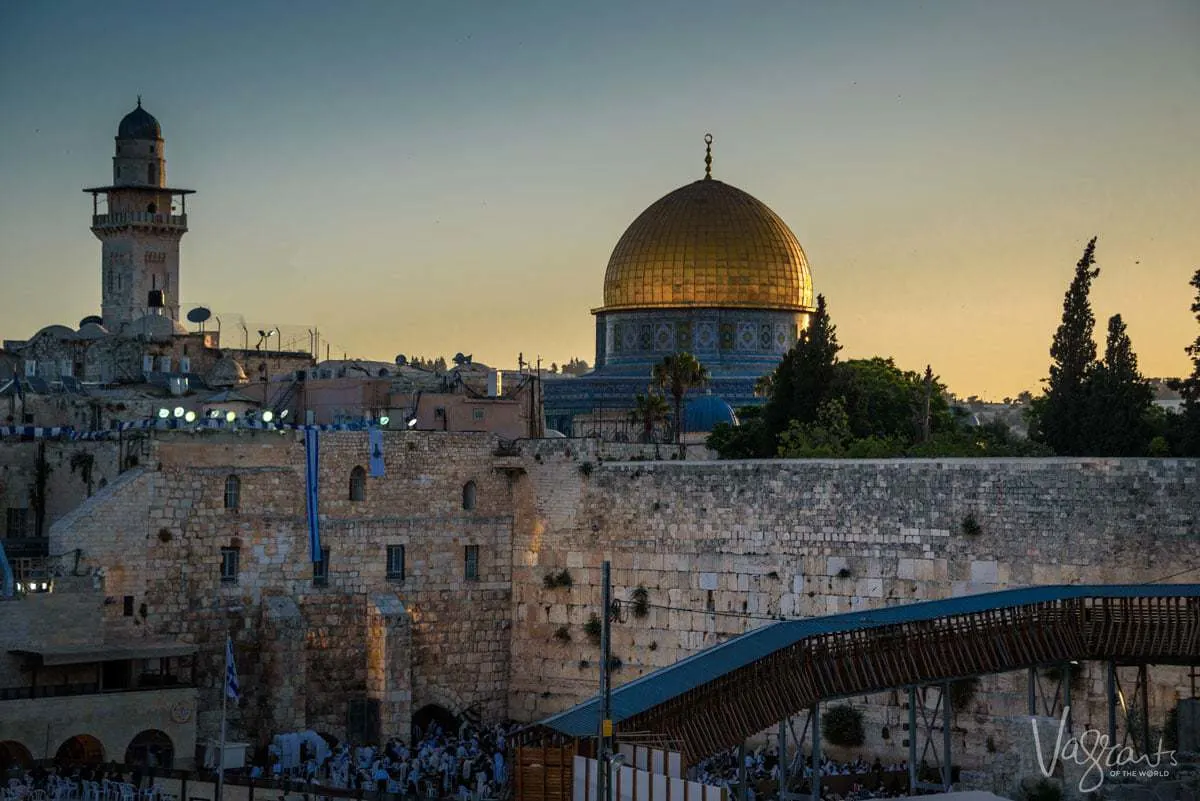
Al Aqsa Mosque (Qibly Masjid Mosque)
The Al-Aqsa Mosque or Qibly Masjid Mosque is the most significant mosque in Jerusalem. Often confused with Dome of the Rock which is actually a shrine, Qibly Masjid Mosque is the third holiest site in Islam after Mecca and Medina.
Visiting Al Aqsa Mosque
Al Aqsa mosque is on the southern end of the Temple Mount. Visitors must dress modestly, and women should cover their hair.
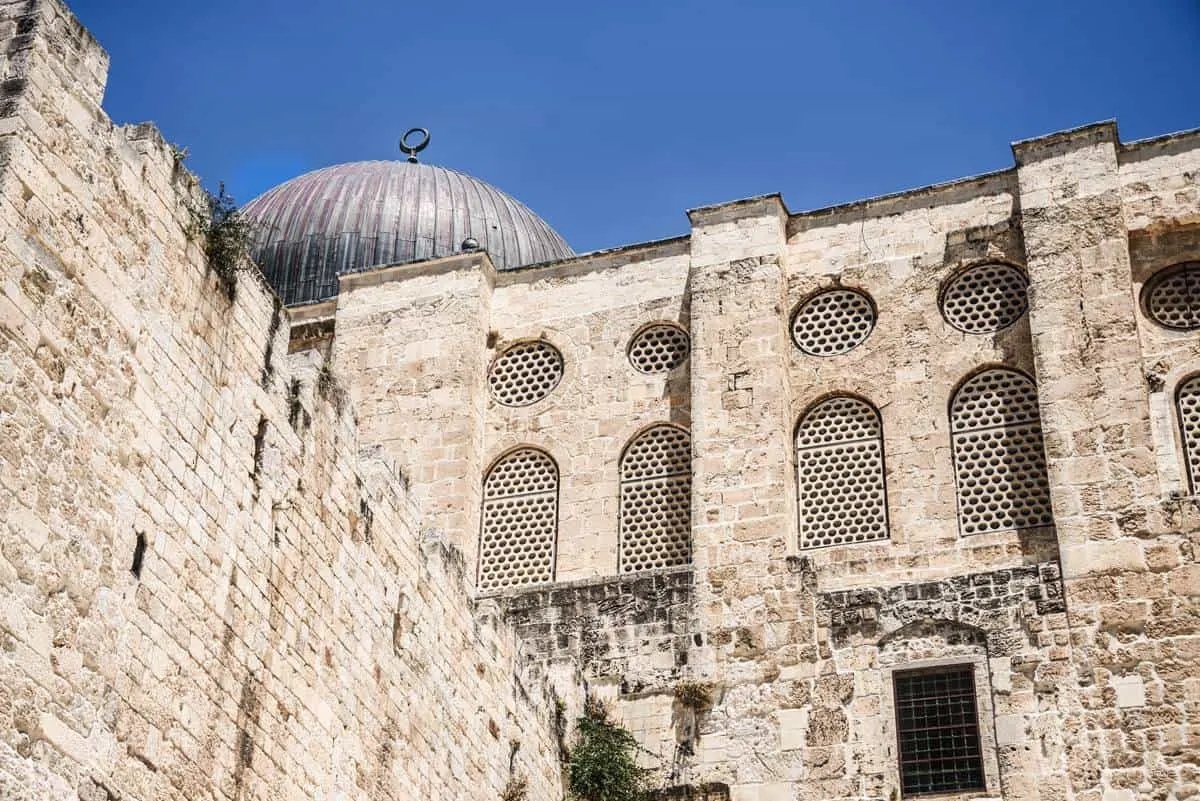
Visiting Hours for Temple Mount
The Temple Mount is closed to visitors on Friday and Saturday. At times the site may be closed without notice even during scheduled opening times.
Visiting Hours for Monday – Thursday:
- Winter: October – March 7:30 am – 10:30 am and 12:30pm – 1:30 pm
- Summer: April – September 8:30am – 11:30am and 1:30pm – 2:30pm
Be prepared for long queues. You may not bring any religious paraphernalia into the site; electronic devices may also be banned for this reason. Once inside Temple Mount, prayer of any form is prohibited.
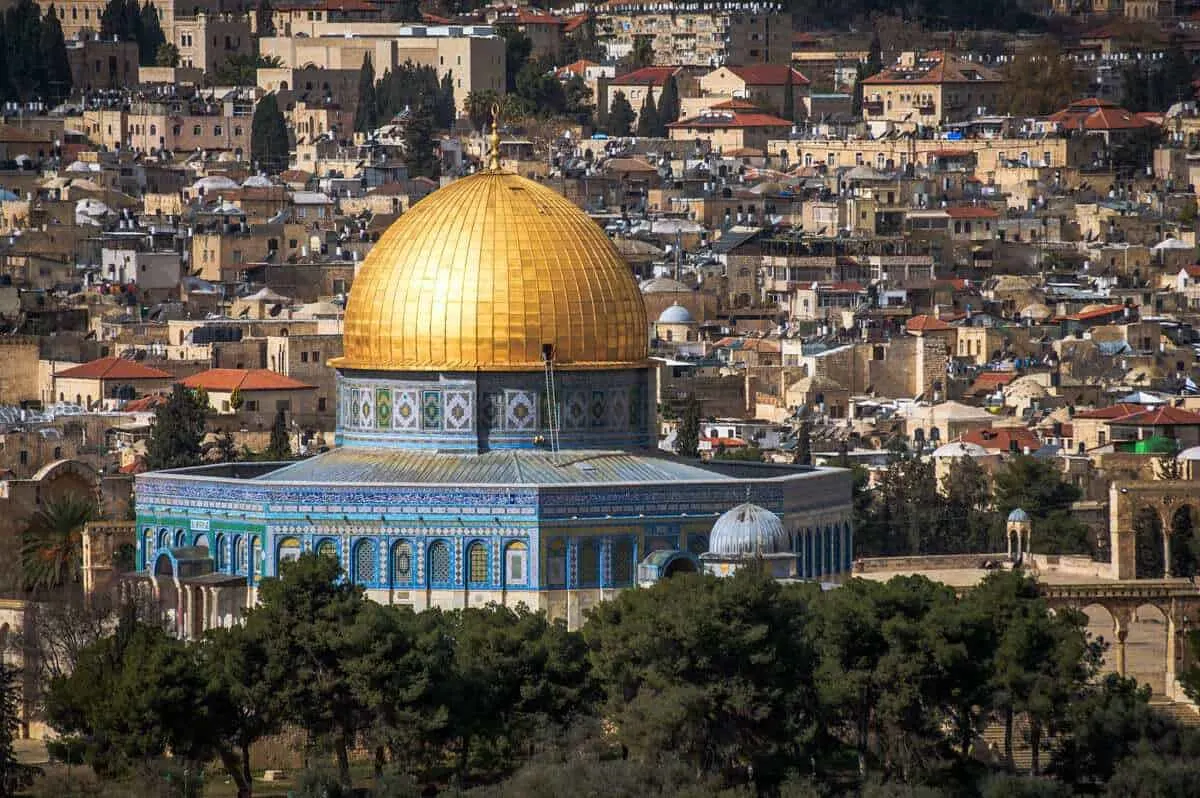
Western Wall – Kotel
The section of wall known as the Western Wall, or Kotel surrounding the Temple Mount is a retaining wall built when the Second Temple was constructed over 2000 years ago.
The Western Wall is considered the holiest site for prayer by the Jewish faith given its proximity to the original temple and the gates of heaven.
Pilgrimage to this area was not possible for Jews during the time East Jerusalem was under Jordanian control between 1948 and 1967. The Western Wall now attracts millions of pilgrims every year who come to pray or hold Bar Mitzvah ceremonies.
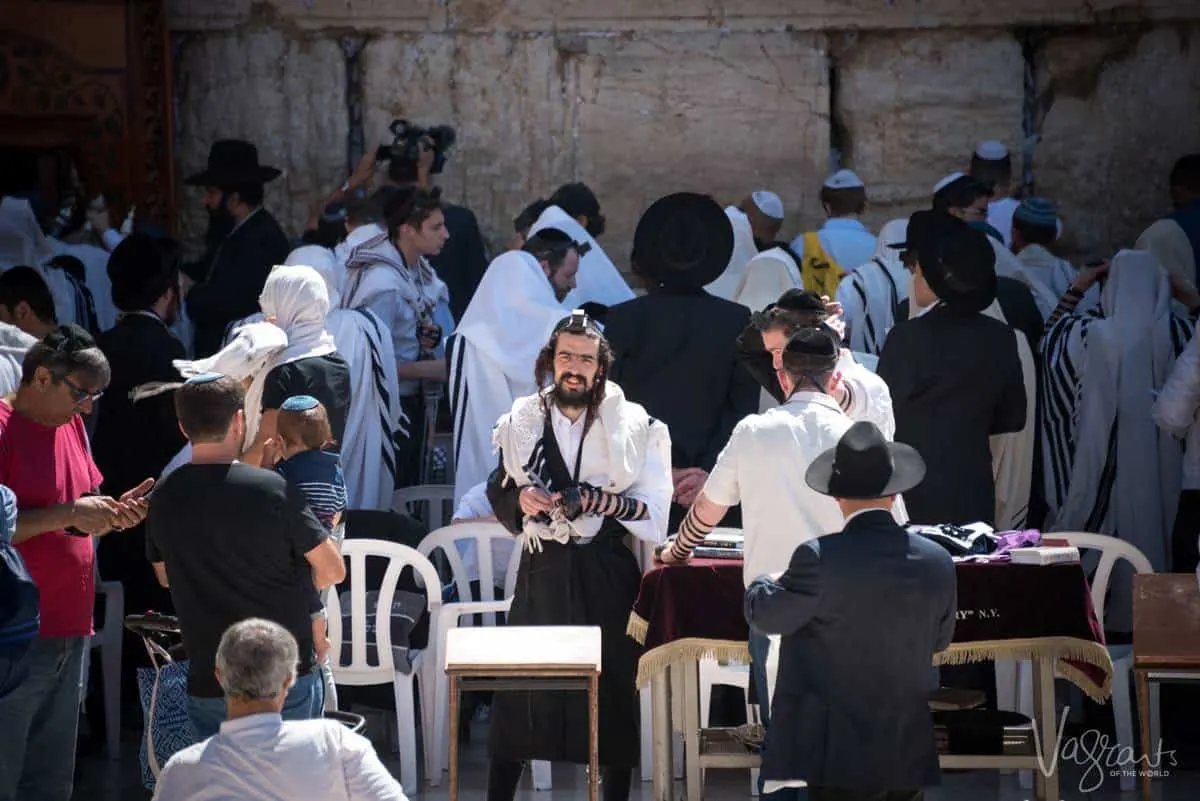
Prayer at the Western Wall
It is common for people who come to pray at the Western Wall to place prayers written on small pieces of paper into the many cracks in the wall.
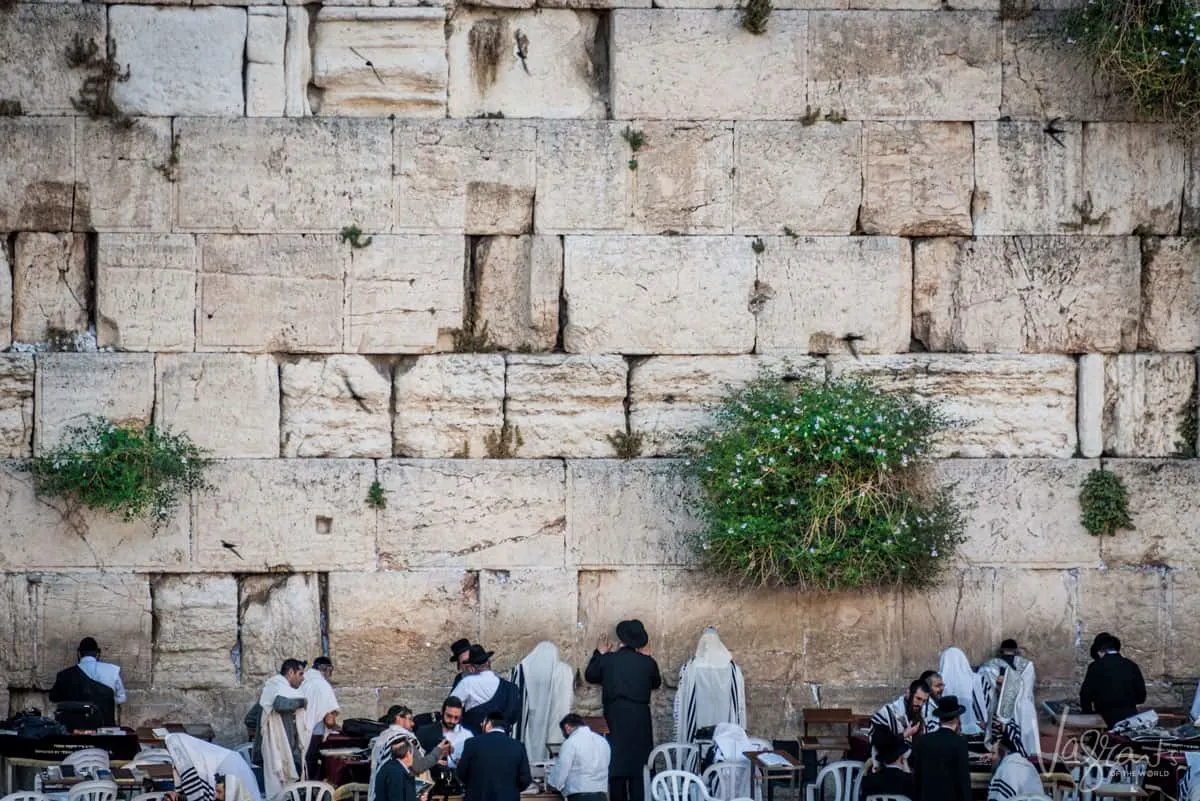
Visiting the Western Wall
You may visit the Western Wall at any time; it is open 24 hours a day.
The Wall is divided into two sections; men to the left and women to the right. Visitors of all religions are welcome to pray at the wall but are asked to observe modesty requirements.
Men must have a head covering. If you don’t have one, they are available for free at the entrance. Likewise, the women may borrow shawls to cover legs or shoulders.
Security at the Western Wall
When entering the Western Wall Plaza, you will have to go through a security screening similar to an airport screening where all bags and belongings will be x-rayed.
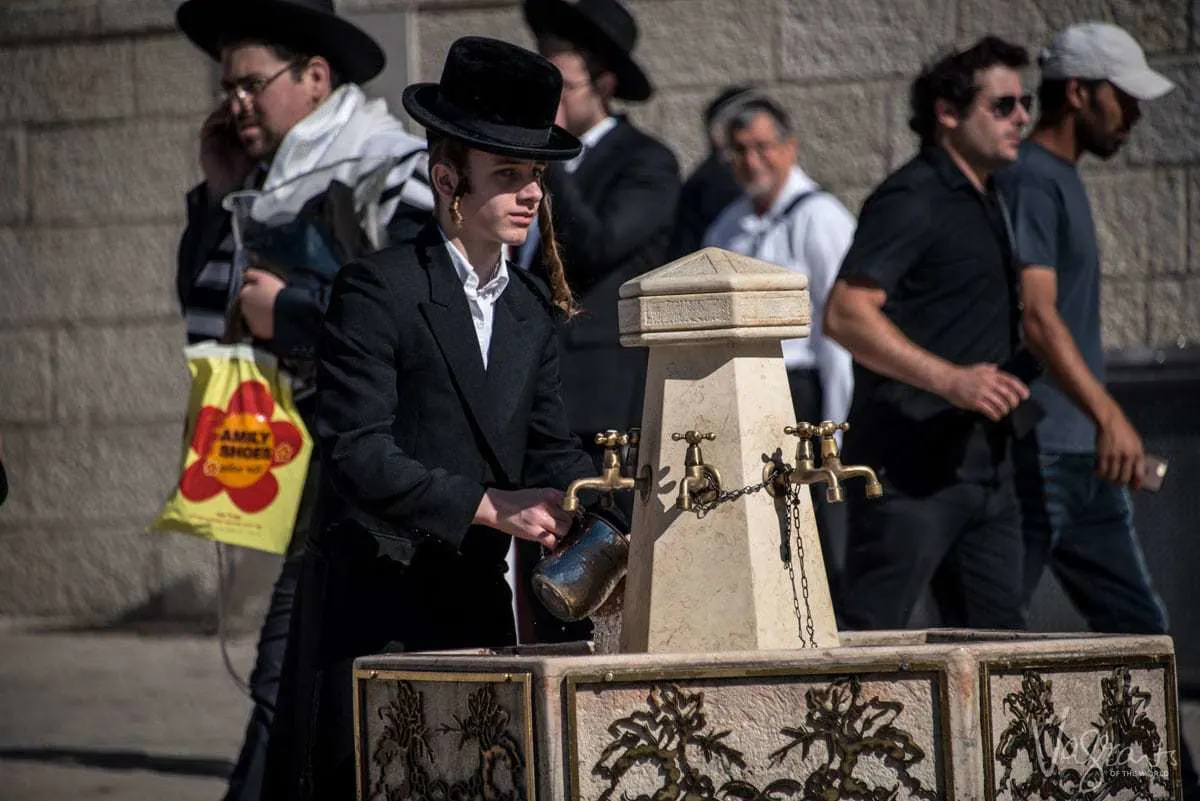
Western Wall Tunnel
The Western Wall Tunnels run along approximately 488 meters along the Western Wall. One of the most revered places inside the tunnels is the part of the Western Wall traditionally considered closest to where the Holy of Holies used to be on the Temple Mount.
The Holy of Holies, where the Foundation Stone and the Dome of the Rock are located, is the holiest place for Jews. There is a small synagogue at this spot in the tunnels where Jews come to pray.
Visiting the Western Wall Tunnel
Hours
Sunday – Thursday: 7:20 am until late at night
Friday: 7:20am – 12pm
Admission:
Tour of the Western Wall Tunnel is only possible when accompanied by a local guide.
The Church of the Holy Sepulchre
In the Christian Quarter of the Old City is the Church of the Holy Sepulchre. The site of the crucifixion and burial of Jesus Christ and the holiest site in the Christian faith.
The Church of the Holy Sepulchre is the headquarters of the Greek Orthodox Church of Jerusalem, but control of the church itself has been shared by several Christian denominations and secular entities for over 160 years.
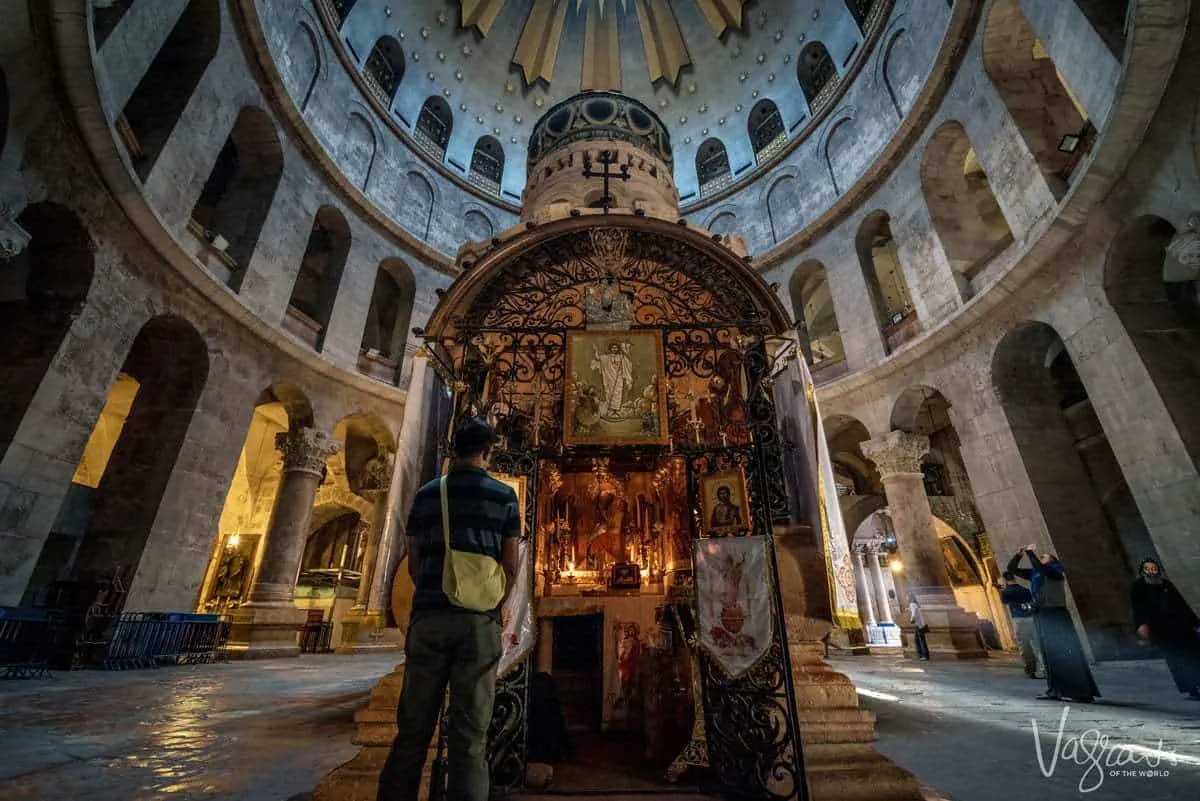
Masses of people from all over the world make the pilgrimage to witness the place where Jesus was crucified, buried and more importantly, resurrected.
It is customary for pilgrims to kiss The Stone of Unction, the place where Christ’s body was laid down in preparation for burial after being removed from the crucifix.
Tip for Visiting the Church of The Holy Sepulchre
If possible, arrive very early in the morning. The church is one of the most popular sites in Old City Jerusalem and becomes very crowded with both tourists and pilgrims from around 7-8 in the morning.
The church is open from 5.00 am and well worth an early start.
We arrived at 6.00 am, and the first tour and pilgrim groups had started to arrive.
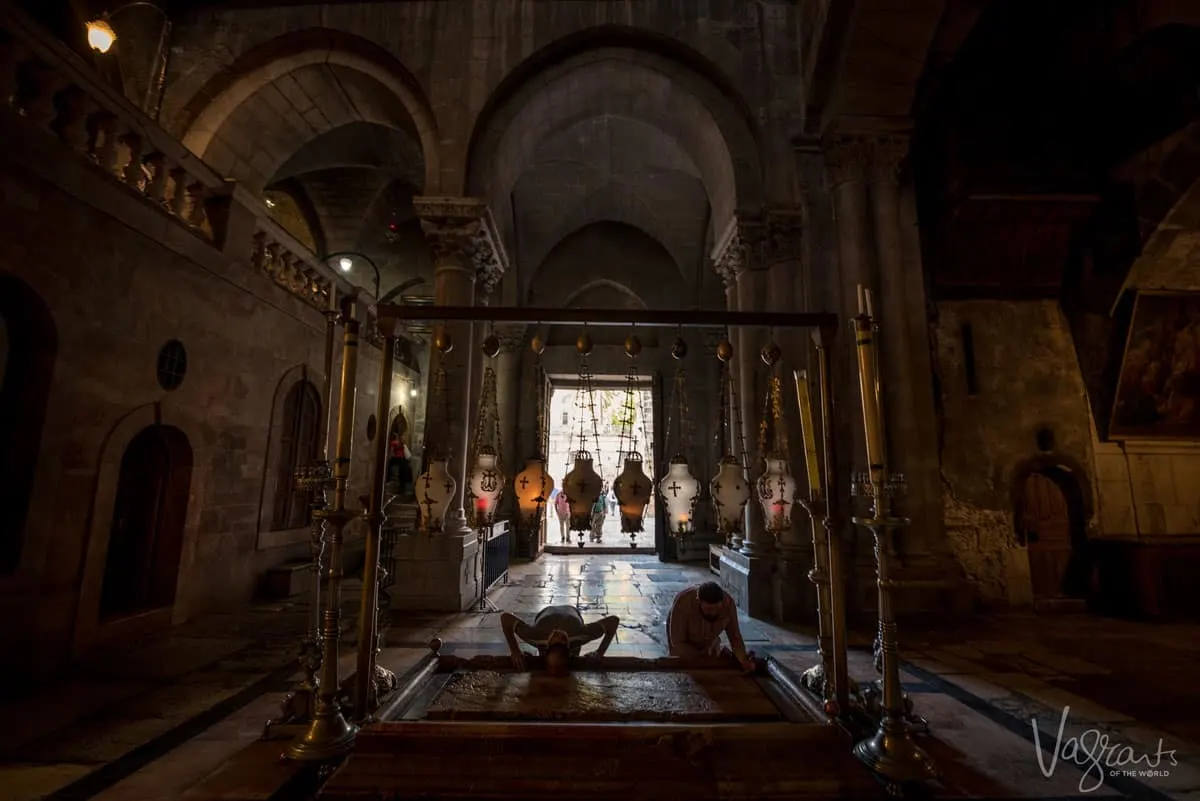
The Via Dolorosa
For Christian pilgrims, the most important and meaningful thing they will do in Israel is to walk the Via Dolorosa. This 600-meter stretch of road through the Old City is said to be the route Jesus took between his condemnation by Pilate, his crucifixion and his burial.
The Via Dolorosa pilgrimage is an important pilgrimage for Christians of many denominations, but chiefly Catholics and Orthodox.
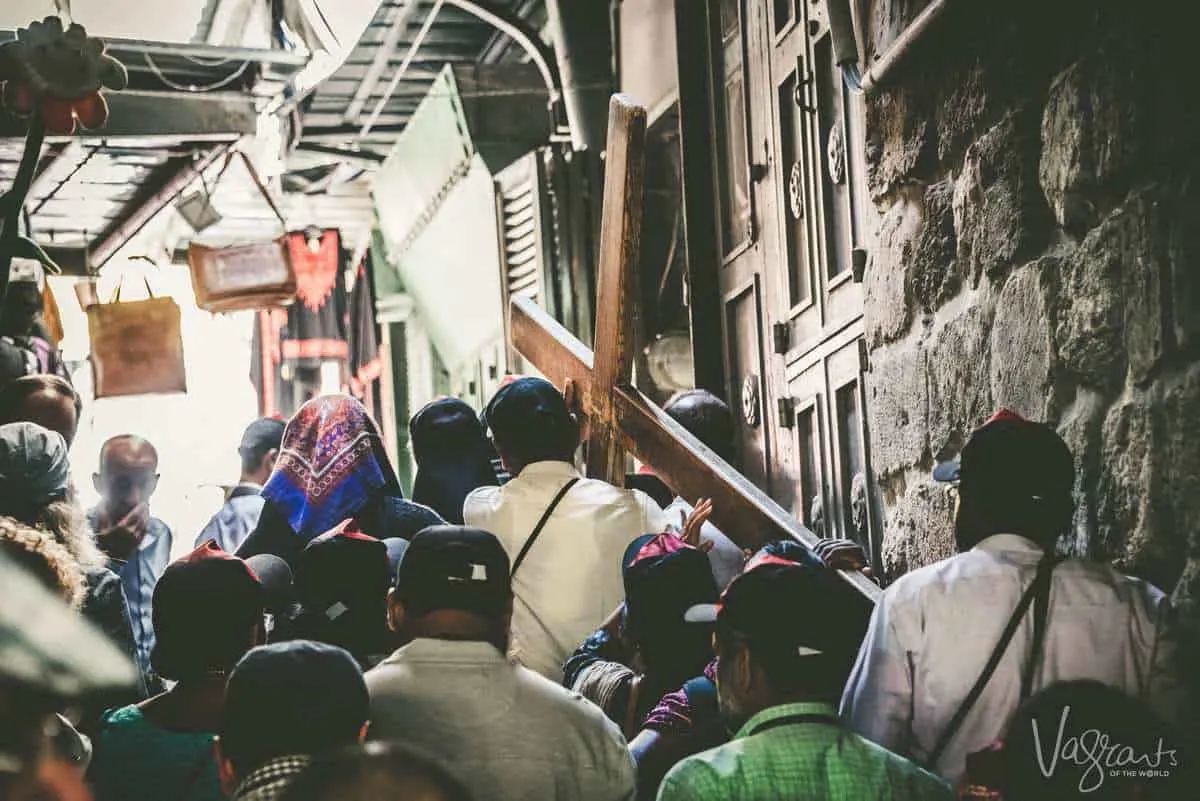
Walk The Wall of Jerusalem Old City
You can walk around the old city ramparts from the Jaffa to Damascus gates for a different view of Jerusalem. To be honest; this was not the most interesting or scenic rampart walk we have done but worth the small fee.
From the top of the ramparts, you can get some lovely views of the city of Jerusalem outside the old walled city. You will also come across a few good elevated views of life within the walls of Old City Jerusalem.
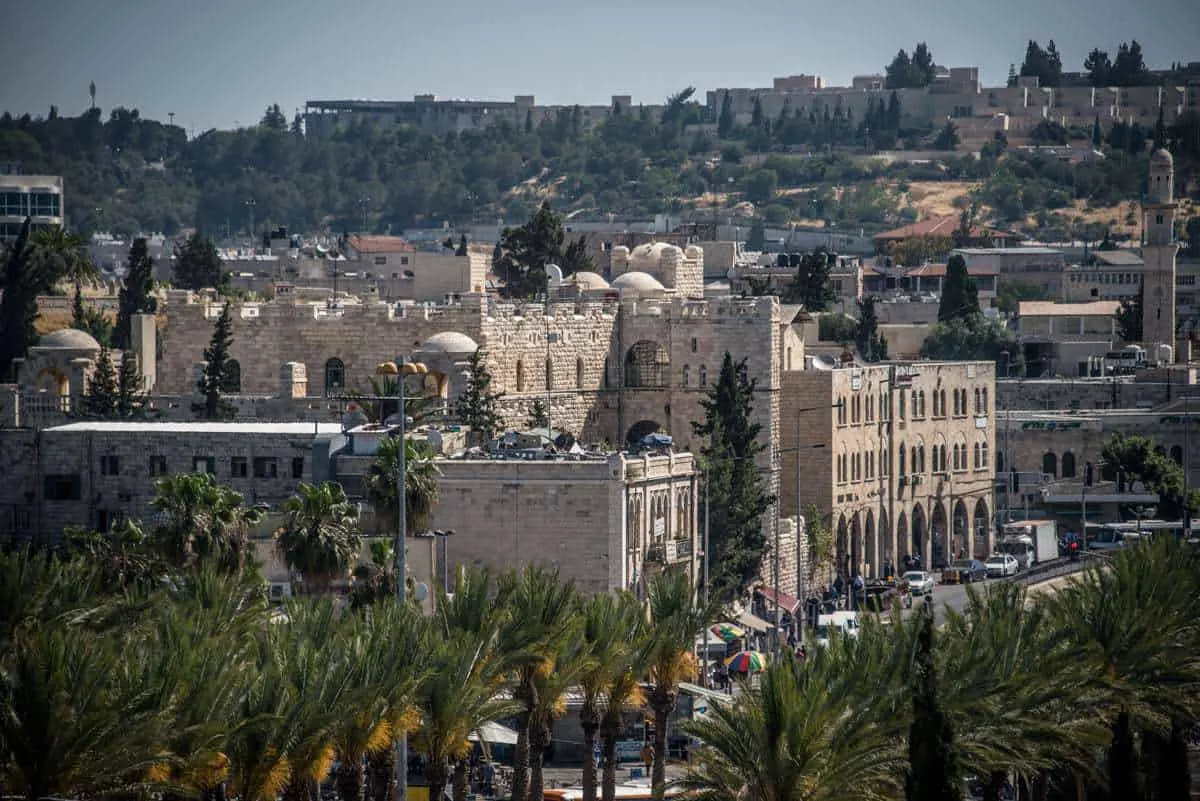
Tickets and Opening Hours to Walk the Ramparts
Tickets can be purchased at the ticket office next to the information centre at Jaffa Gate.
Opening Hours:
Between 9am-4pm.
During the summer months, the southern side is open until 7 pm and the north side until 5 pm.
Recommended Day Tours of Jersalem
Jerusalem: Holy City Tour – 4 Hrs
Full-Day City Tour of Jerusalem – 10 Hrs
Jerusalem, Dead Sea & Bethlehem Full-Day Tour – 1 Day from Tel Aviv
Yad Vashem World Holocaust Memorial
This official memorial site to the millions of victims of the Holocaust, the Jews who fought against the Nazis and the Gentiles who selflessly aided the Jews.
The memorial is a must-see while visiting Israel as it speaks not just for the lives lost but for the many who survived and resettled in Israel.
Visiting Yad Vashem
Opening Hours
Sunday – Wednesday: 8:30 am – 5:00 pm
Thursday: 8:30 am – 8:00 pm
Fridays and Holiday eves: 8:30 am – 2:00 pm
Yad Vashem is closed on Saturdays (Shabbat) and all Jewish Holidays.
Entry Fee
Entry to the Holocaust History Museum and all other sites is free.
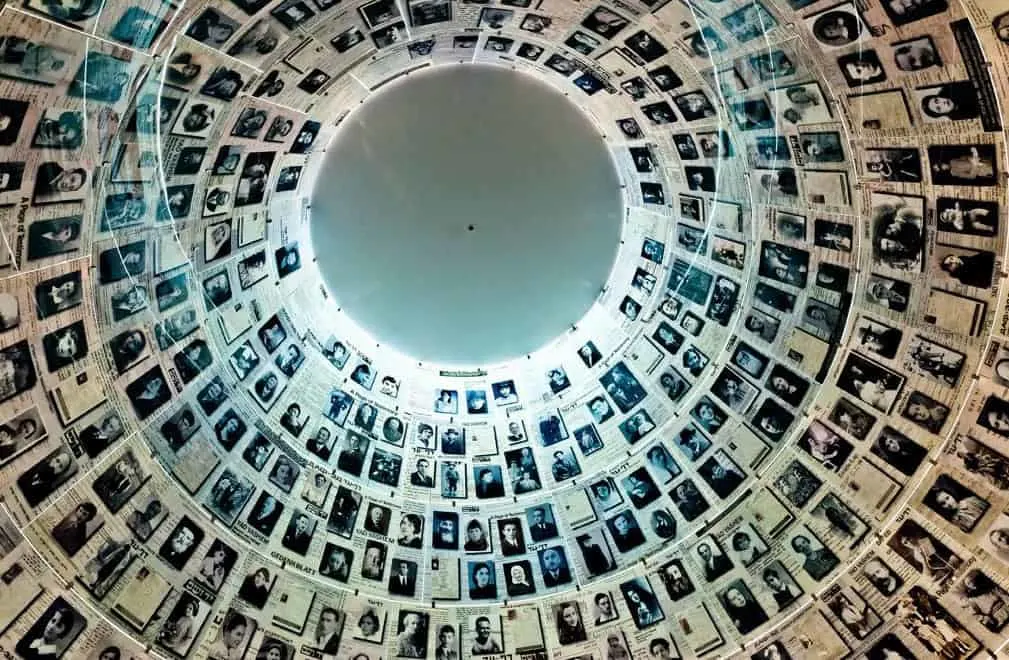
Cities of Israel
Israel boasts many vibrant cities, rich in atmosphere and culture. Modern living set against the old world atmosphere of Israel’s millennia of history. Each city has a unique vibe, and cultural atmosphere and each has a different story in history to tell.
City of Jerusalem
Jerusalem, The Holy City, is an elegant combination of ancient history, mixed culture and the day-to-day of modern life. While many come to Jerusalem to visit the Old City, a lot is happening around New Jerusalem.
Whether exploring the markets, sampling some of the fantastic restaurants and bars or just people watching on the famous Ben Yehuda Street, Jerusalem has a wonderful atmosphere and is worth exploring beyond the Old City.
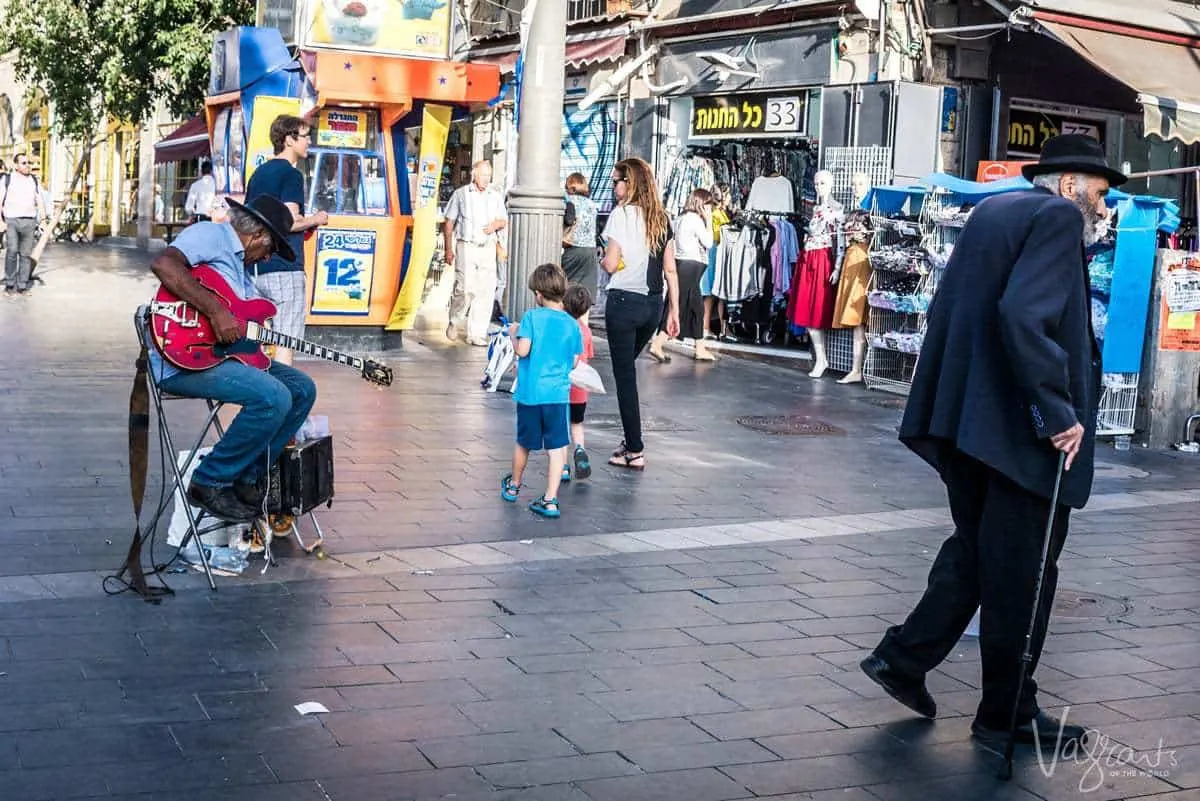
Machane Yehuda Market
The largest market in Jerusalem and the oldest in the country, “The Shuk” as it is known is the other “must-see” in Jerusalem. Dating back to the late 1800s; the Machane Yehuda Market began as a simple marketplace for locals where Arab farmers and Jewish housewives haggled over prices.
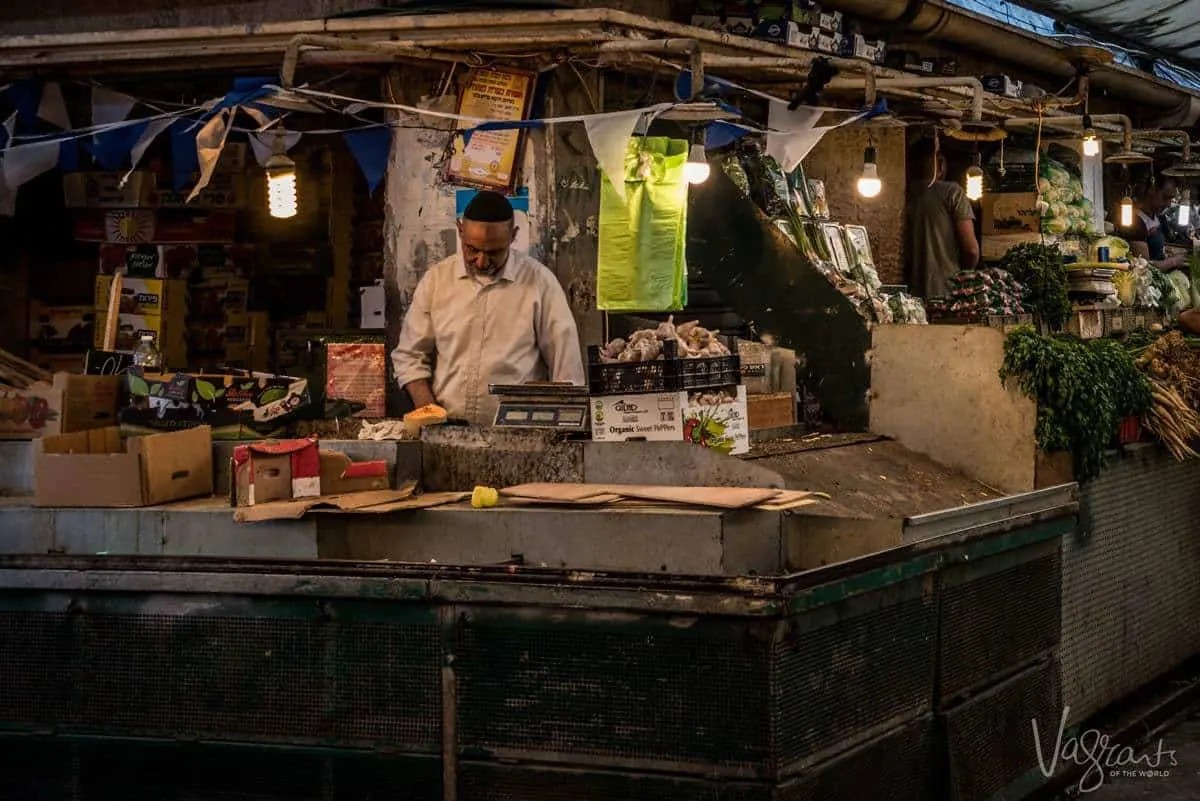
On that front, not much has changed. Although the market now boasts over 250 stalls and has done an excellent job progressing with the times. Pop in during the day and enjoy the daily trade of fresh produce and homewares. Come back in the evening after the stalls have closed for a very different take on the market.
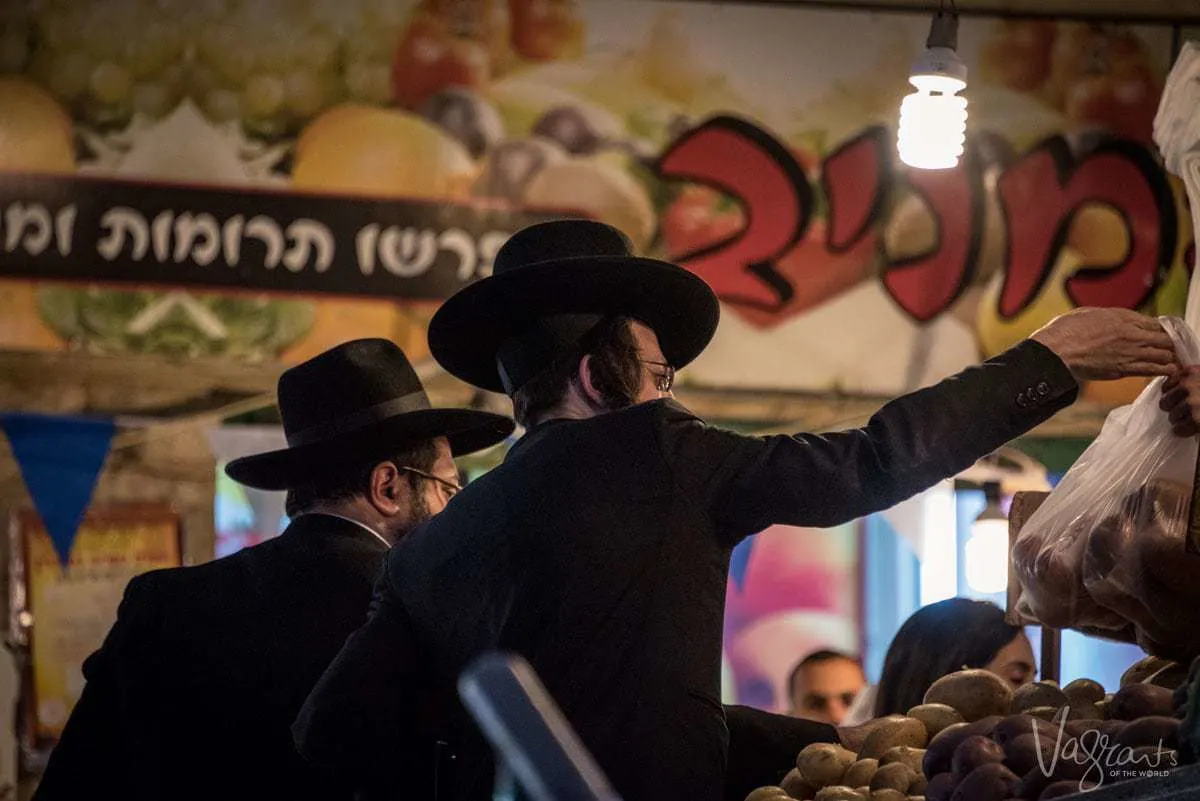
Spend an Evening at Machane Yehuda Market
Small pop up bars, cafes, hip food outlets and restaurants are becoming the norm in the ancient marketplaces. Markets such as Jerusalem’s Machane Yehuda market, have become major focal points of Israeli nightlife.
Bars and restaurants will stay open long after the vendors have gone for the day attracting a new breed of marketplace clientele. It’s a great place to head for dinner.
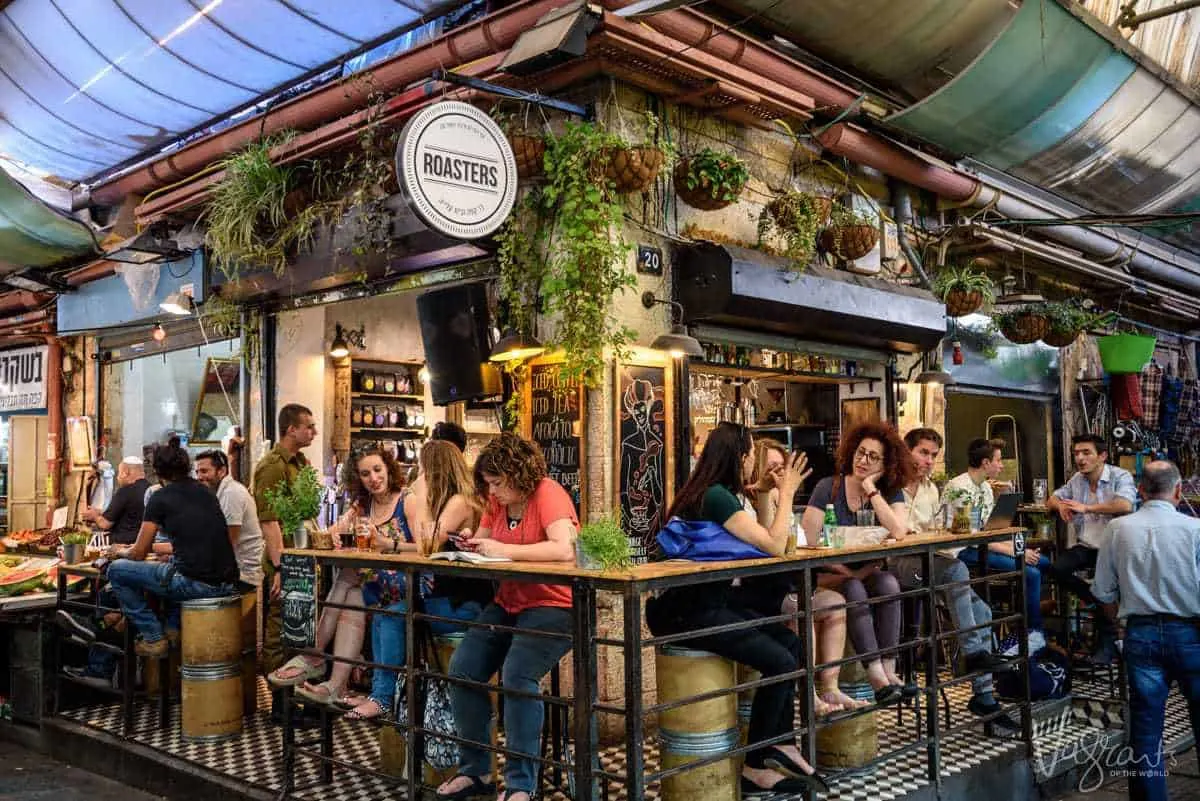
Machane Yehuda Market Tours
Tel Aviv
Famous for its beach lifestyle and hedonistic nightlife, some say if Jerusalem is the holy city, Tel Aviv is Babylon. Tel Aviv often surprises first-timers with its modern outlook and lively social scene. You will never be short of things to do in Tel Aviv.
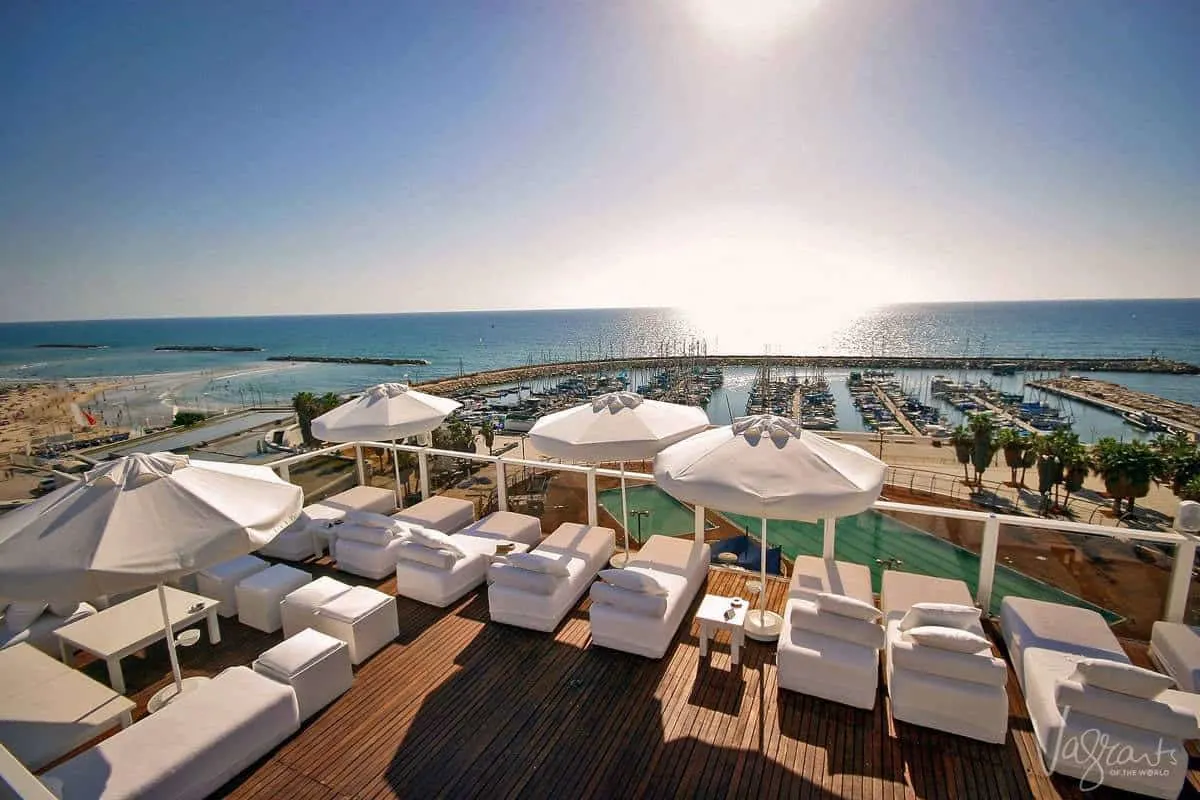
Neve Tzedek – The Soho of Tel Aviv
Commonly known as the “Soho” of Tel Aviv. South West of Tel Aviv, Neve Tzedek was the first Jewish neighbourhood built outside the old city of Jaffa. It is now considered one of Tel Aviv’s prettiest and most fashionable districts.
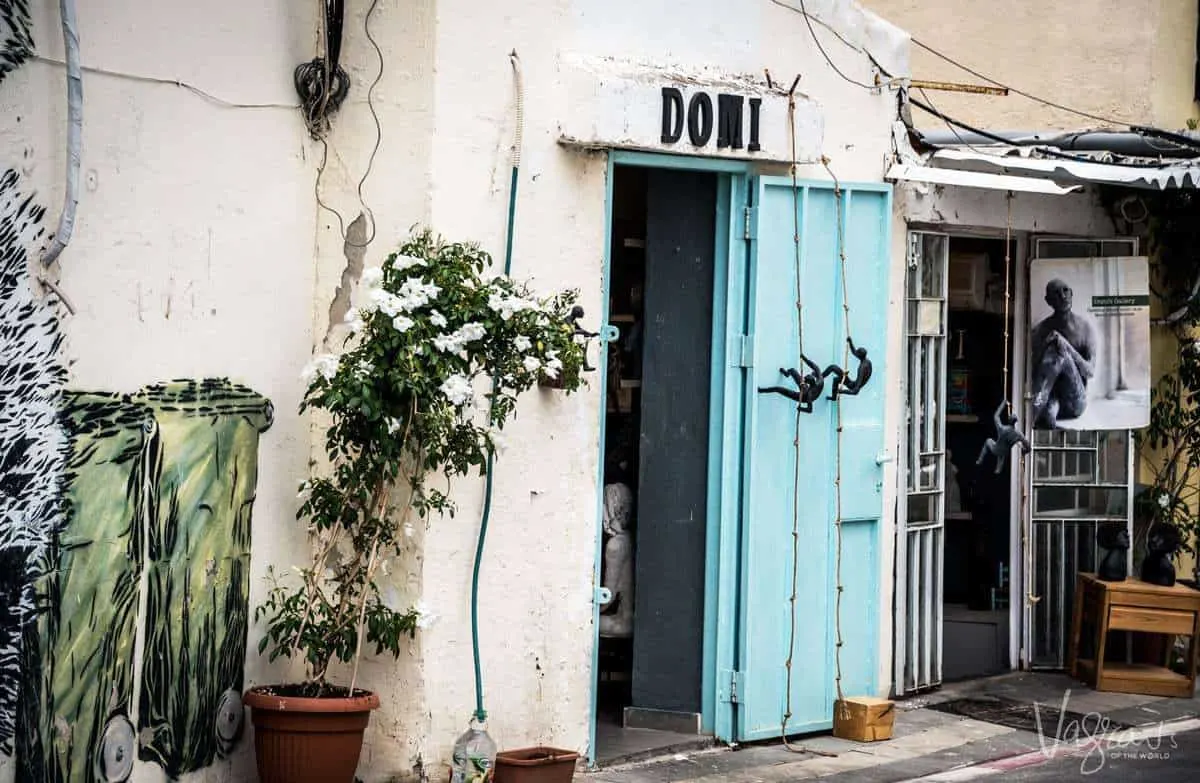
Explore Jaffa
An ancient Arab seaport is considered the oldest part of Tel Aviv. Old Jaffa is a highlight with ancient cobblestone streets, galleries and busy waterfront eateries. A recent restoration of the area has brought new life to Jaffa and is now an exciting extension of Tel Aviv’s urban scene.
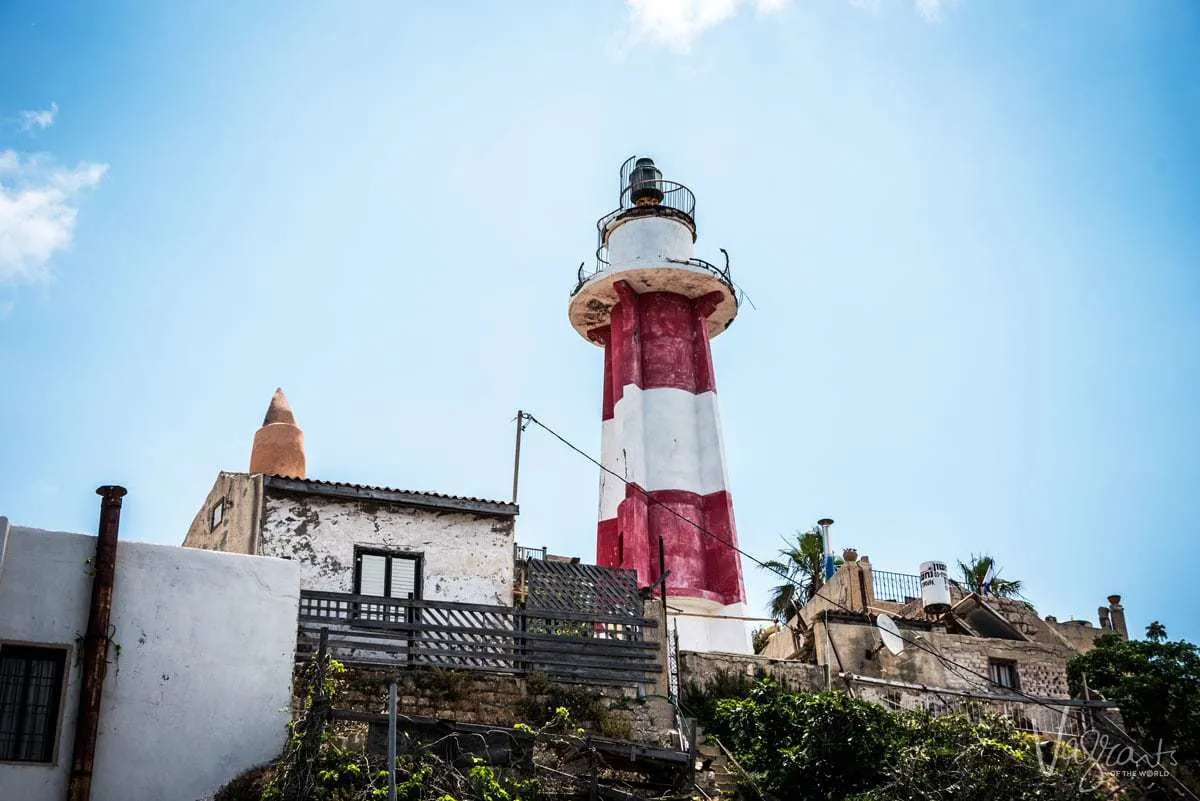
The historic city has been revived and is now one of the most vibrant places to enjoy the waterfront lifestyle of Tel Aviv.
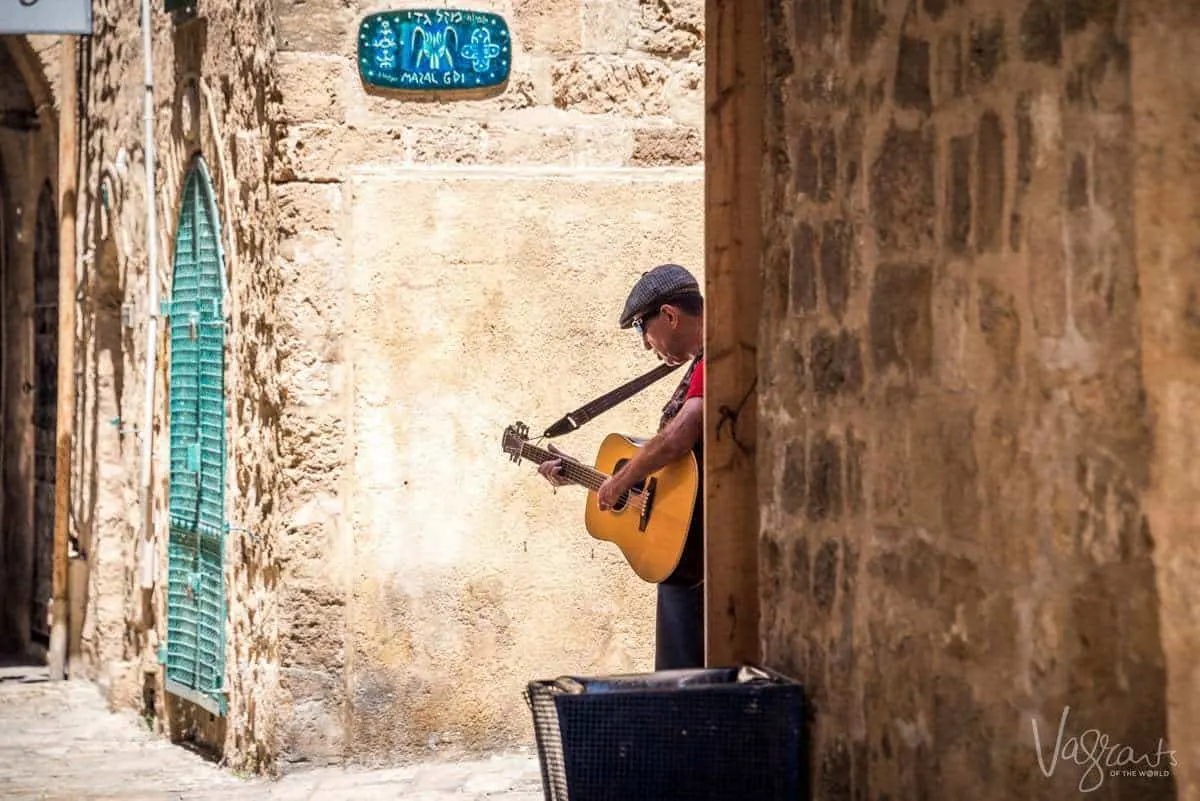
Haifa
The biggest attraction of the northern seaport city of Haifa, other than its fabulous ocean vistas, is the Baha’i Shrine. The second holiest shrine of the Baha’i faith and the immaculately landscaped terraces of the Baha’i Gardens attract tourists and pilgrims alike. A serene monument to the founders of the religion and a World Heritage site.
At the foot of the Baha’i Gardens, you will find the German Colony, with shops, galleries and restaurants in 19th-century buildings. A lovely place to window shop, stop for coffee or a relaxing dinner.
Visiting the Baha’i Gardens
The Baha’i gardens are open daily between 9.00 am and 5.00 pm. The Baha’i Shrine welcomes visitors between 9:00 am and noon daily.
It is free to visit the gardens. Modest dress is expected.
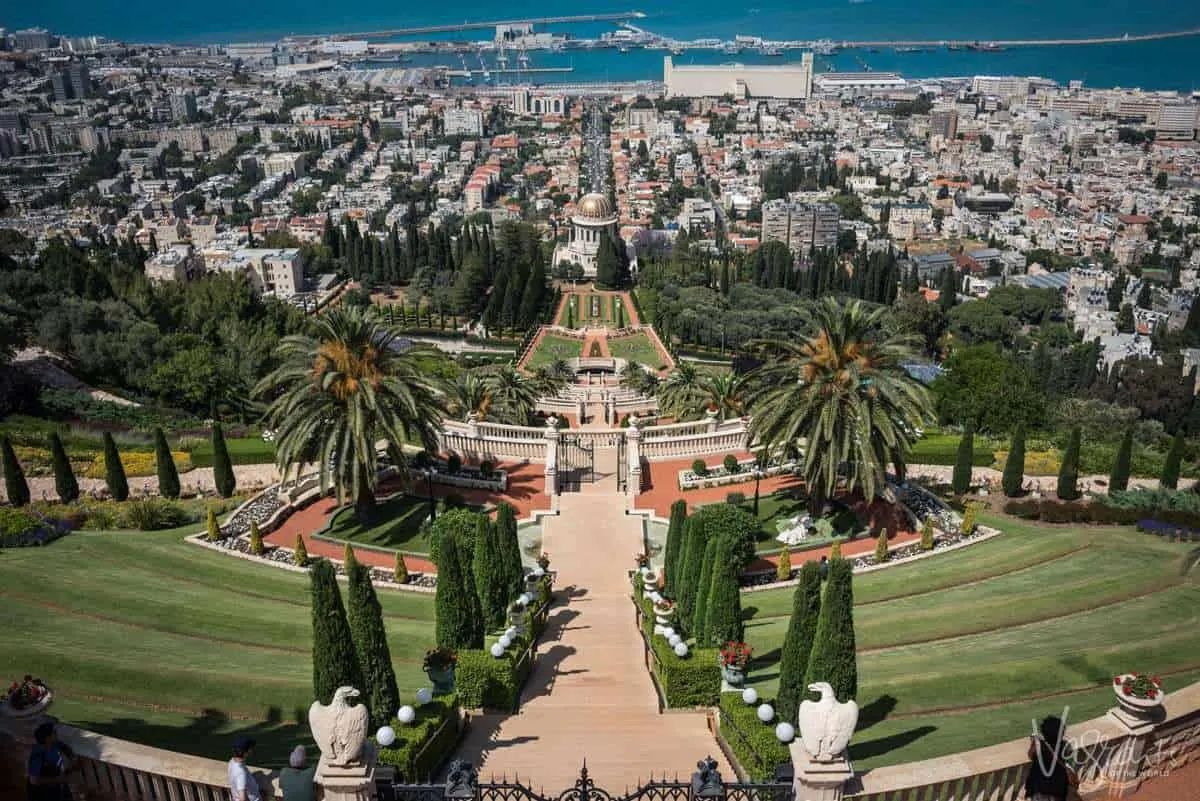
The Mystical City of Safed, Galilee
Safed is one of the four holy cities of Israel, the spiritual centre for Kabbalah and a renown artist colony. Many refer to Safed as a mystical place. It is also a very unique place to visit in Israel.
Located in the Northern District of Israel it is the highest city in the Galilee and Israel. Set in the dense pine forests of the Upper Galilee, overlooking Tiberias and the Sea of Galilee, the old city of Safed is a tourist hot spot.
A city steeped in mystical symbolism. Narrow lanes where doors and windows are painted blue to confuse evil spirits. Along with devout Kabbalists, the old city has also been a haven for artists which created the Artists Quarter full of shops and galleries.
Safed is also loaded with museums and ancient synagogues. Remember to dress modestly.
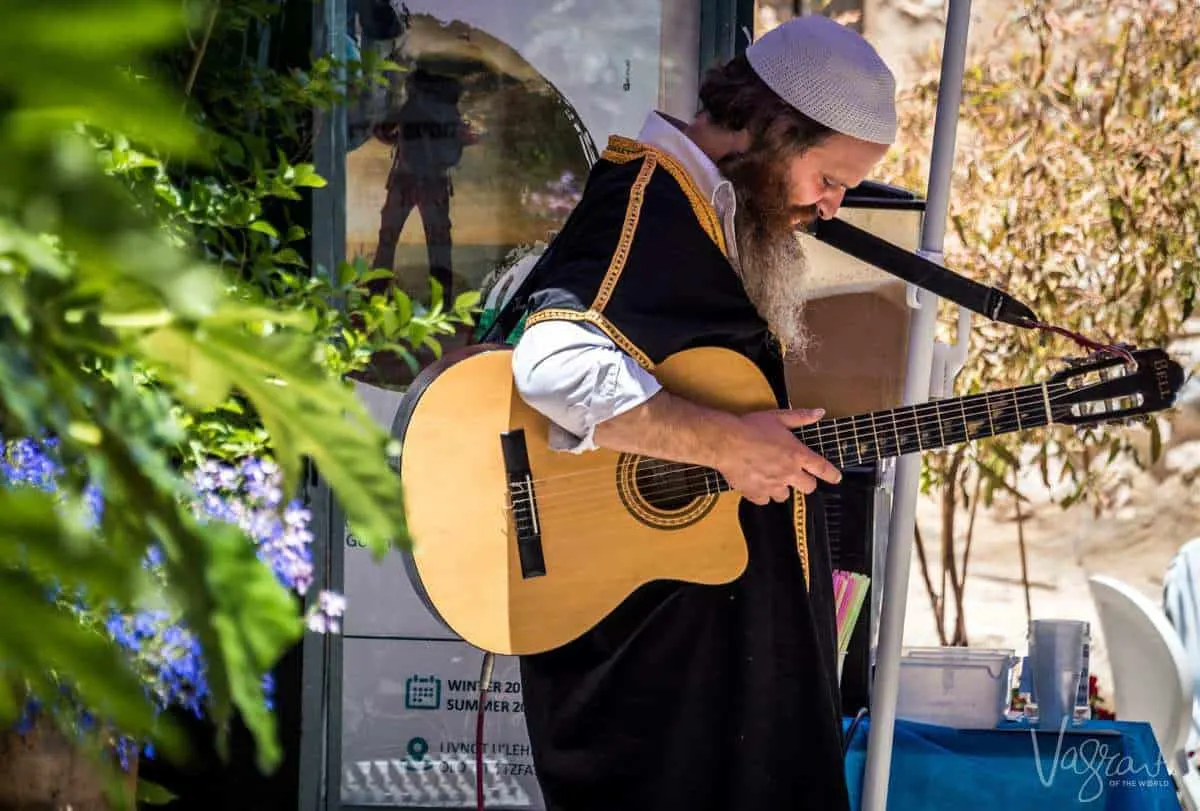
Village of Nazareth
The town of Nazareth is where Jesus spent his childhood; it now boasts the largest church in the Middle East – The Basilica of the Annunciation. The church houses a cave-dwelling said to be the home of Mary and the place where the arc angel Gabriel appeared to her.
Ten minutes from the centre of town you will find Nazareth Village, a recreation of Jesus’ hometown and farmlands where Jesus and his family would have lived and worked. Visitors are given a first-hand experience of how life during the time of Jesus would have been.
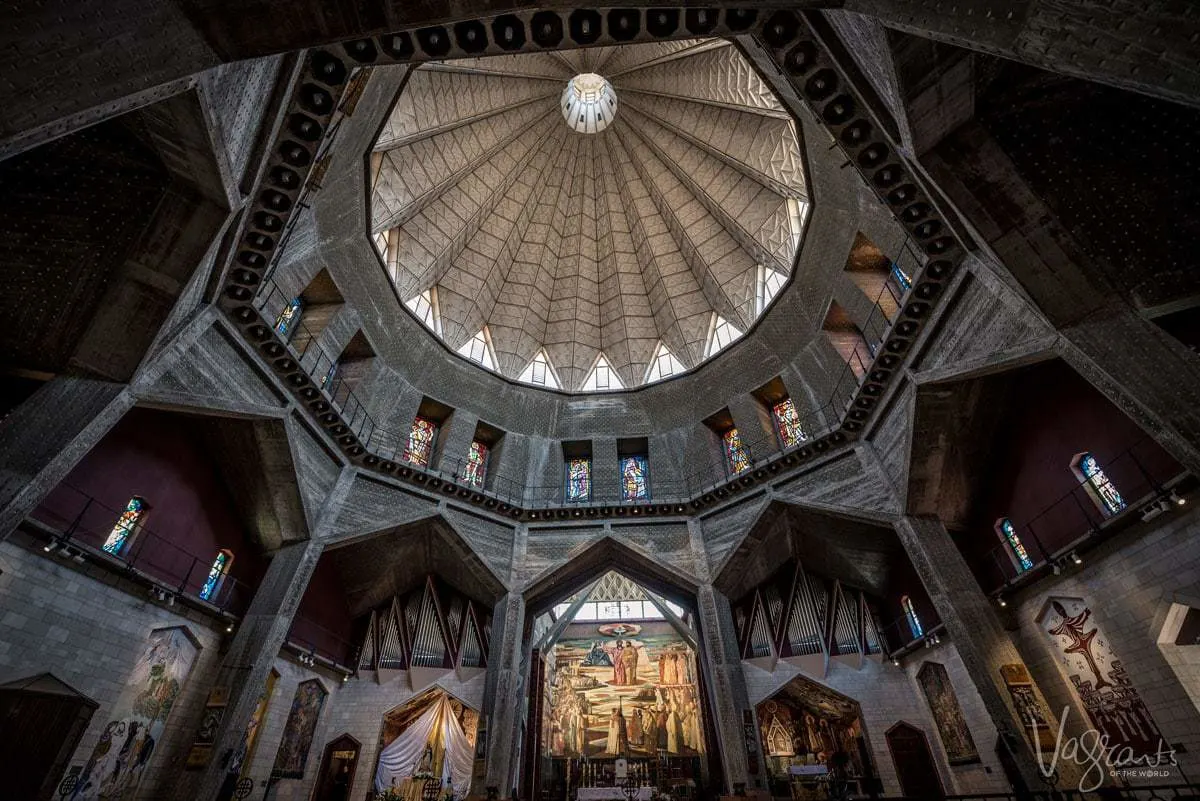
Bethlehem
The birthplace of Jesus and one of the most popular destinations in Israel for Christian tourists who come to visit the Church of the Nativity. Only 20 minutes from Jerusalem, Bethlehem is a great half day trip.
While Bethlehem is close to Jerusalem getting there can be tricky, so it usually recommended visiting with an organised tour or guide.
Crossing the Border to the West Bank
Bethlehem is located close to the border in the West Bank which is part of the Palestinian Territories. Tourists may cross the border between Israel and the West Bank very easily. However, Israeli citizens cannot enter the Area A zone in the West Bank where Bethlehem is located. Entry into Israel for Palestinian citizens is also very restricted.
Hire cars from Israel may not cross the border nor can taxis from Jerusalem. There is a bus from the Damascus Gate in Jerusalem although this is quite slow. You can organise a private car if deciding not to go with a tour guide.
Important – You will need your passports for returning to Israel.
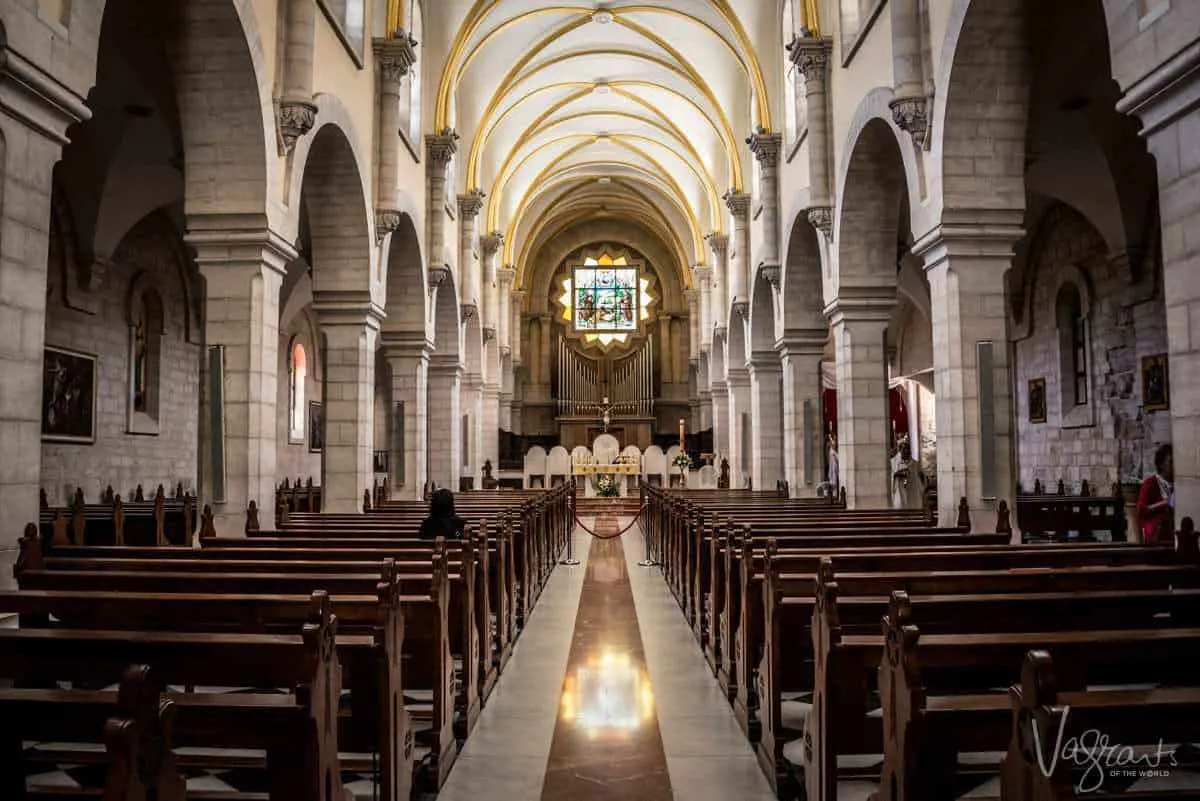
City of Acre
Acre is a port city on the Mediterranean coast in the north-west. While not high on the list for all tourists to Israel, Acre lays claim to one of the richest archaeological sites in the country. The walled city of Ottoman-era alleys and ancient souks cover an astoundingly intact Crusader city.
The Unesco World Heritage site has been compared to Pompeii as continued excavations are revealing a complete city.
Visiting the Old City of Acre
Check the official Old Akro site for visiting hours and prices as these will vary greatly depending on which sites you would like to visit.
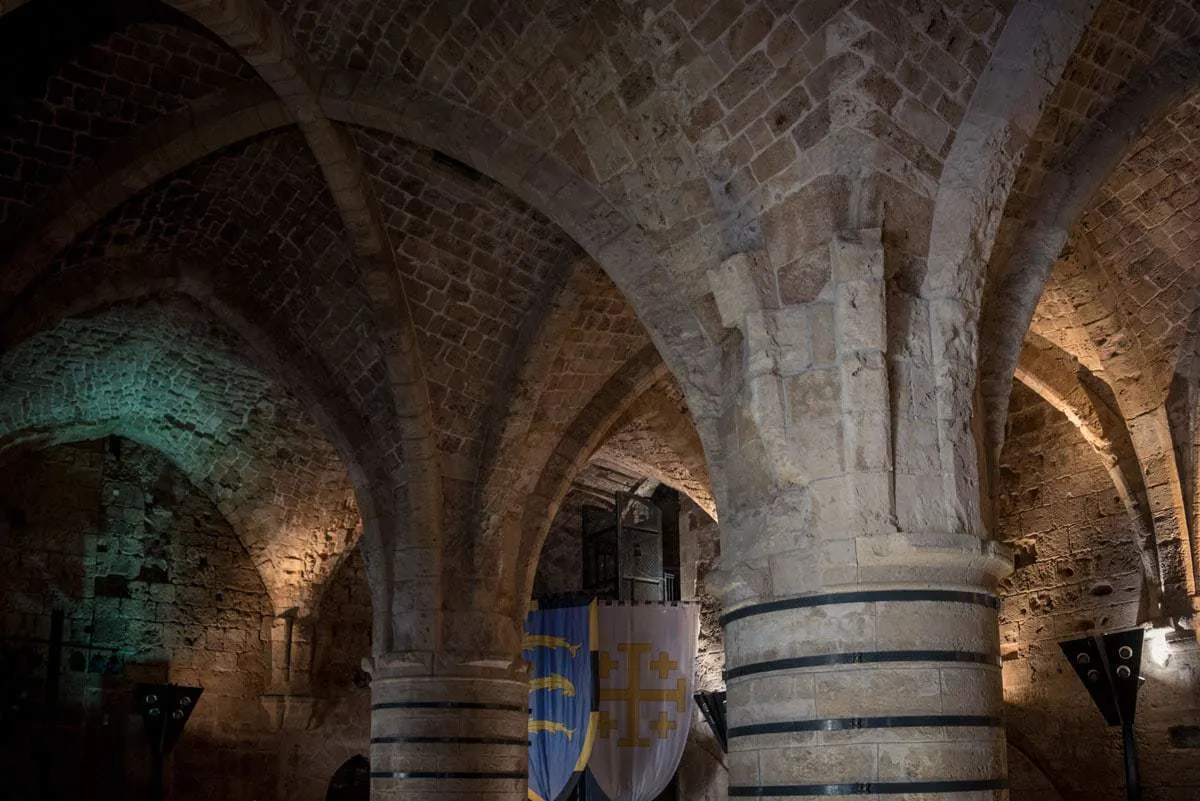
Beyond the World Heritage Site of the Crusader city, there is plenty to see in Acre. The colourful Ottoman souk still trades as it always has. There is the possibility for boat tours from the ancient port and lots of very popular Arabic style restaurants specialising in locally caught fish.
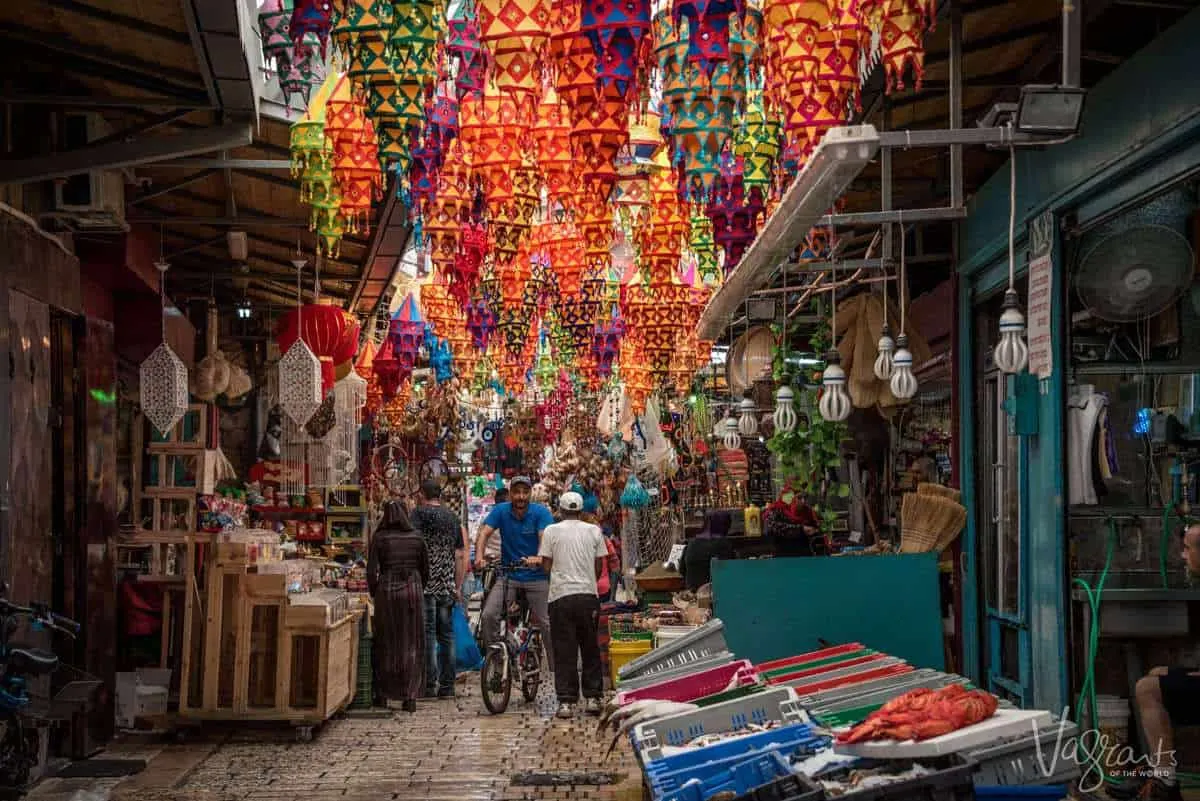
The Natural & Historic Beauty of Israel
Israel has an incredibly beautiful and varied landscape. The Mediterranean Coast, the lush green agricultural lands of the Golan Heights and the Dead Sea and the surrounding Judaean Desert. Israel’s natural beauty is as steeped in history and cultural significance as its ancient cities and towns.
Swim in the Dead Sea
The Dead Sea, one of the world’s natural wonders, is the lowest and one of the more unusual places on earth. Surrounded by desert mountains, it is also one of the most striking landscapes in Israel. Floating in the Dead Sea is one of those “Must Do” fun things in Israel and the perfect opportunity to rejuvenate and relax.
There are many spa hotels around the dead sea focused on the restorative powers of the world’s saltiest body of water. Float your cares away, whatever you do just don’t put your head under – Ouch!
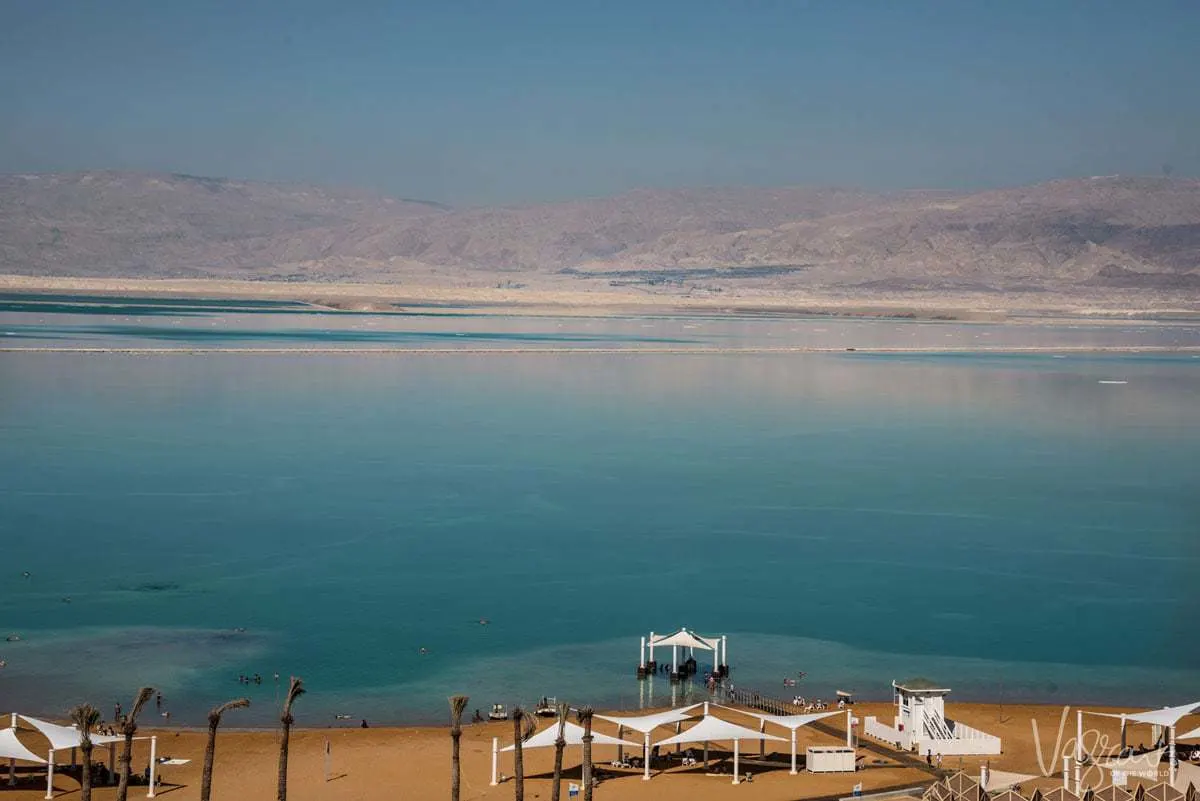
Hula Valley Wetlands
One of the most important nature reserves in the world, this unique ecosystem provides a critical resting place for migrating birds. Depending on the season, the wetlands provide sanctuary for thousands of migratory birds such as cranes, storks, pelicans and flamingos.
Hula Valley Wetlands attracts bird watching and nature enthusiasts from all over the world.
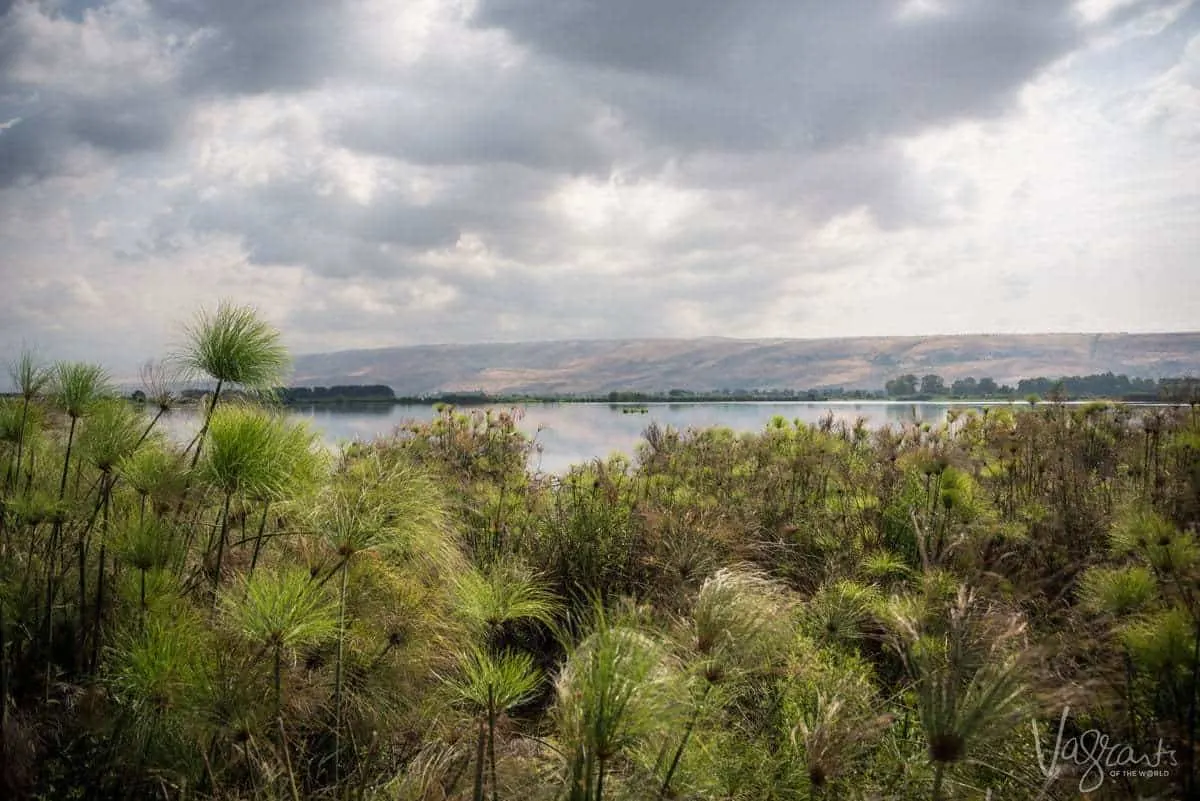
Jordan River Baptismal Site
Winston Churchill said the Jordan River was “a narrow stream with great PR”. The river has great significance for both Christians and Jews as it was the site where the Israelites crossed into the Promised Land and where John the Baptist baptised Jesus Christ.
The baptismal site “Yardenit” on the Jordan River attracts over half a million tourists every year and is a must-visit place for any visitor or pilgrim. Many are pilgrims coming to be baptised in the same place where Jesus Christ was baptised.
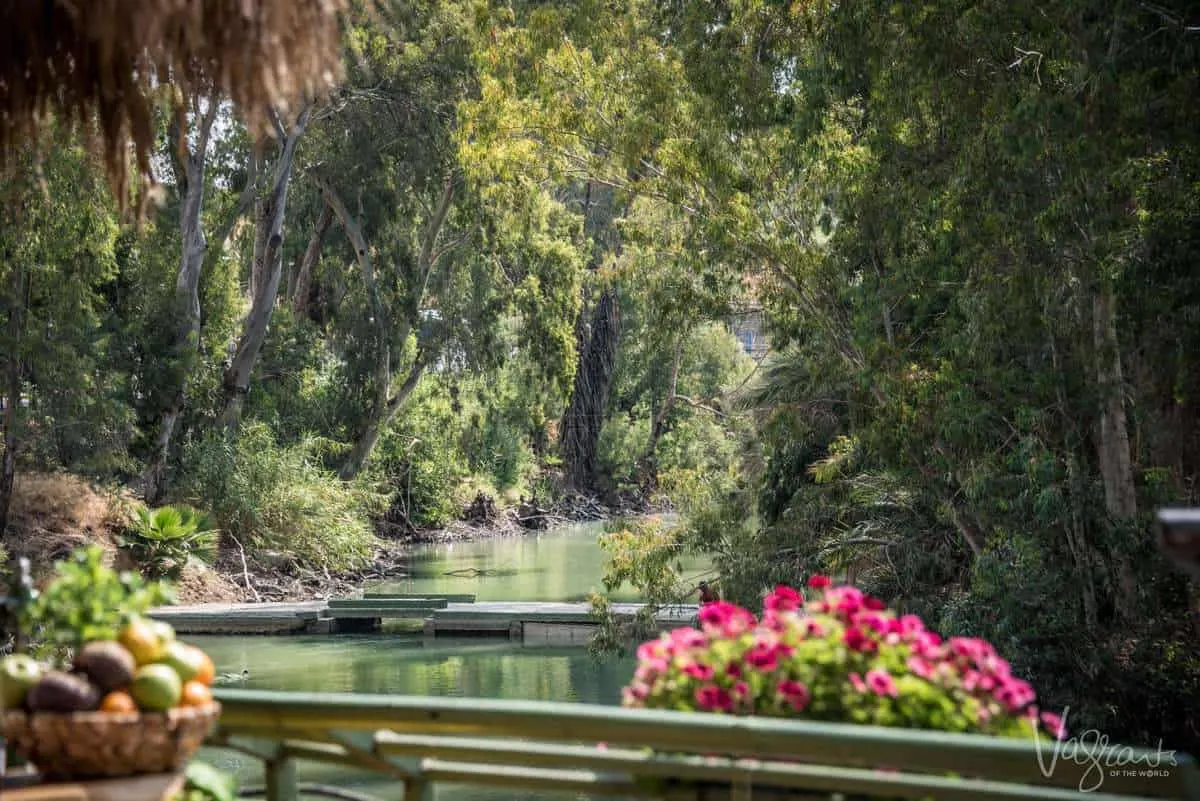
Rosh HaNikra
At the northernmost tip of Israel at the border of Lebanon are the gleaming white cliffs of Rosh HaNikra. Descend by cable car, the steepest in the world, to discover astonishing underwater grottoes and sea caves.
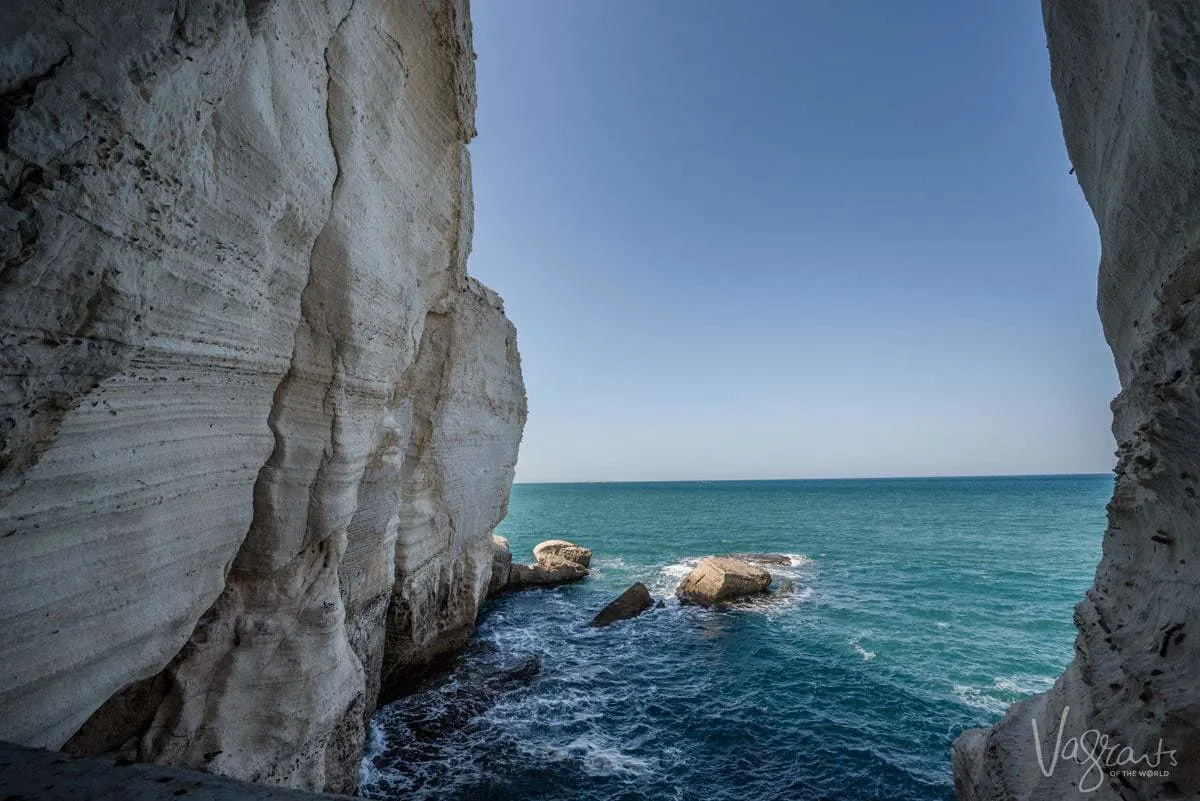
Visiting Rosh HaNikra
Opening Hours:
- Summer Weekdays: 9:00 am – 6:00 pm
- Winter Weekdays: 9:00 am – 4:00 pm
- Friday Holiday Eves:9:00 am – 4:00 pm
- Saturdays and Holidays:9:00 am – 6:00 pm
- Holiday Eves: 9:00 am- Midday
Entrance Fee:
- Adult: 45 NIS (~$12.50 USD)
- Child: 36 NIS (~$10.00 USD)
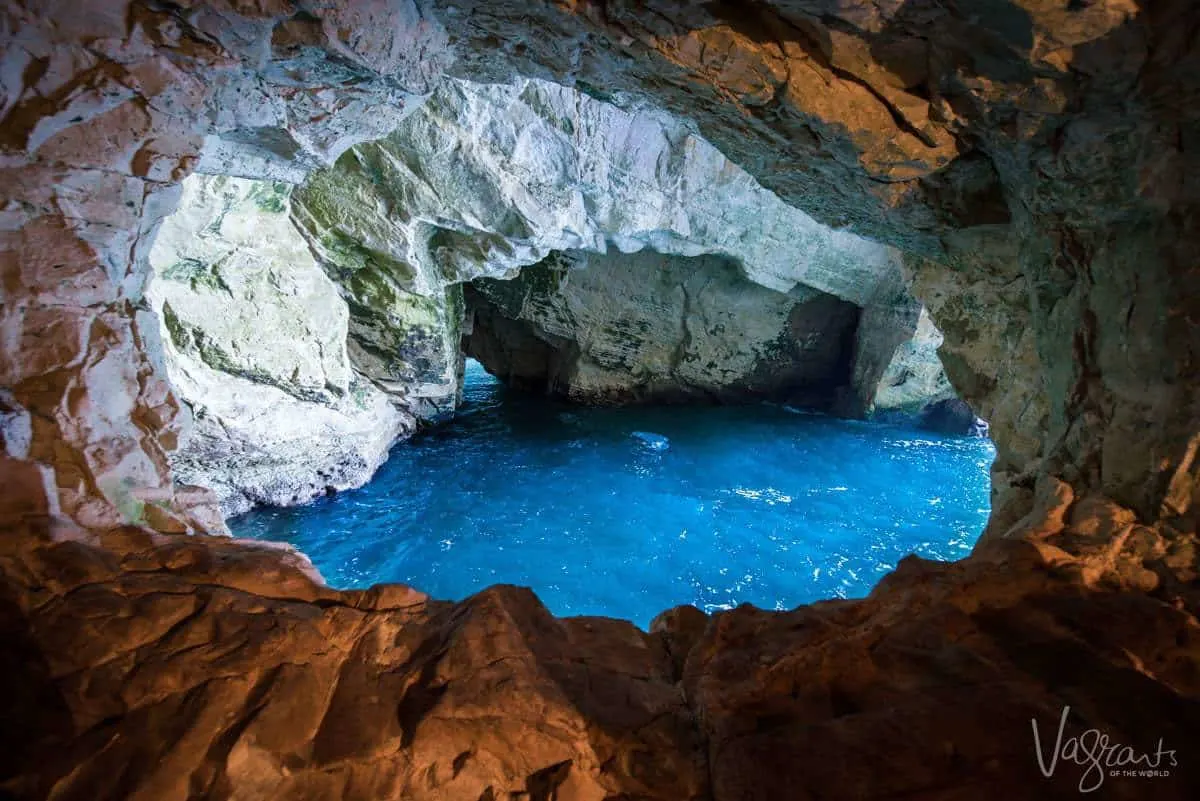
The Dead Sea from Masada
Masada is one of Israels biggest tourist attractions. Take a hike to the top of the fortress of Masada for one of the most beautiful views in Israel. For the less adventurous, the cable car provides a lovely way to take the view on the ride up.

Masada
Masada is one of the greatest archaeological sites in Israel and, perhaps, in the world. The fortress of Masada, built by Herod the Great was where 1000 Jewish rebels and their families chose suicide over surrender to the Romans in 73 AD.
The remains of the fortress of Masada are well-preserved, but perhaps the most impressive is the ruins are King Herod’s Palace covering three rock terraces. Among the other buildings at the site, is an impressive Roman-style bathhouse decorated with murals and colourful mosaic floors.
Visiting Masada
Masada is very high, so many will take advantage of the cable car. However, those who would like to climb Masada can ascend by foot via the winding “snake path”. It has become somewhat of a tradition to climb Masada at sunrise for the spectacular view of the Moab Mountains and the Dead Sea.
Opening Times
- April – September: 8.00 am – 5.00 pm
- October – March: 8.00 am – 4.00 pm.
- On Fridays and holiday eves the site closes one hour earlier than above although the park is open on Saturdays (Shabbat)
The Snake Path Hours:
- Opens approx. One hour before sunrise although will be closed in extreme weather.
Cable Car Hours:
- Sat – Thurs: 8.00 am – 4.00 pm.
- Friday and holiday eves: 8.00 am.-2.00 pm.
- Yom Kippur eve: 8.00 am – Midday
Entrance Fee:
- Eastern Dead Sea side entrance plus cable-car two ways: Adult: 76 NIS | Child: 44 NIS
- Eastern side entrance and climb Snake Path: Adult: 29 NIS | Child:15 NIS
- Masada National Park Combination Ticket -entrance and cable-car one way: Adult: 58 NIS | Child: 30 NIS
- Cable car one-way: Adult: 29 NIS | Child 15 NIS| Cable-car round trip: Adult 47 NIS | Child: 29 NIS
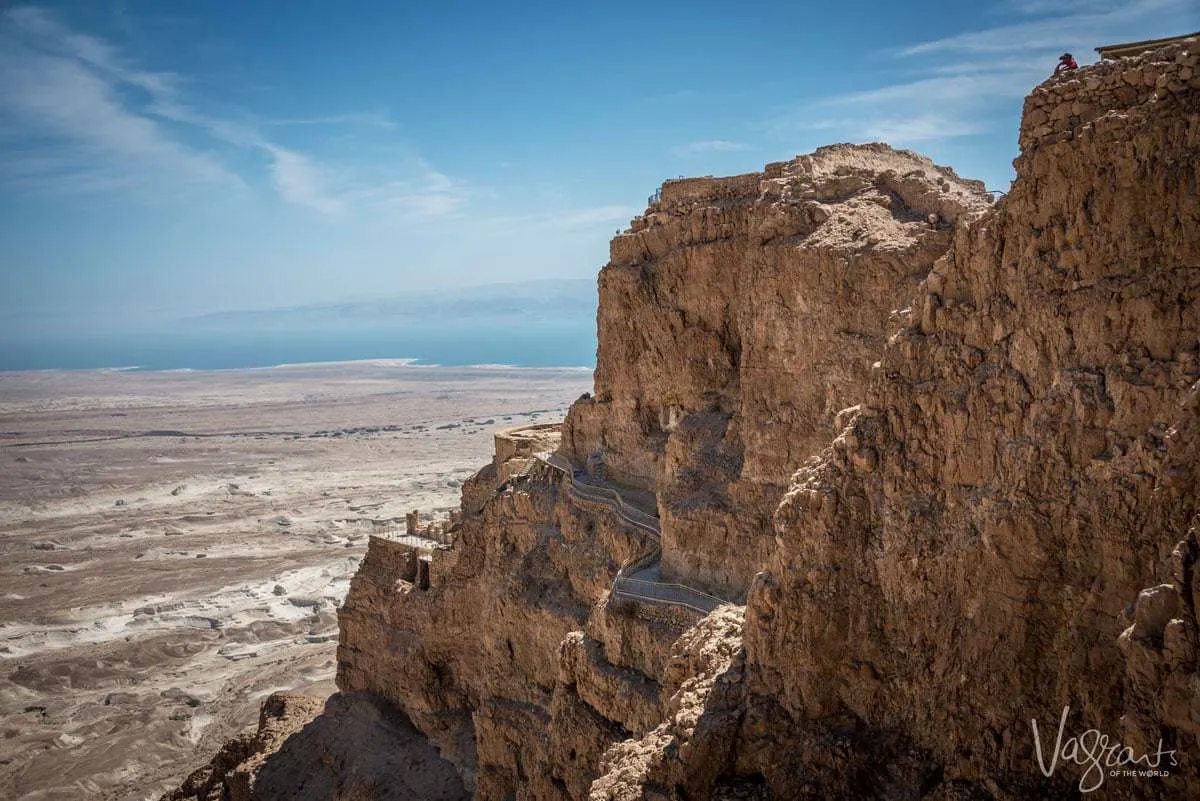
Golan Heights
The Golan Heights in the far north of Israel is famed for its lush scenery, stunning natural attractions and fertile wine regions. Golan Heights is where people of Isreal escape for a reprieve from the cities to indulge in good food and wine and the great natural beauty of the area.
From Mount Bental you can stop for coffee and enjoy views across Israel’s Galilee, Lebanon and the flat plains of Syria. At the site, you can see the former Syrian bunkers and gain some understanding on the strategic importance of the Golan Heights and its recent history.
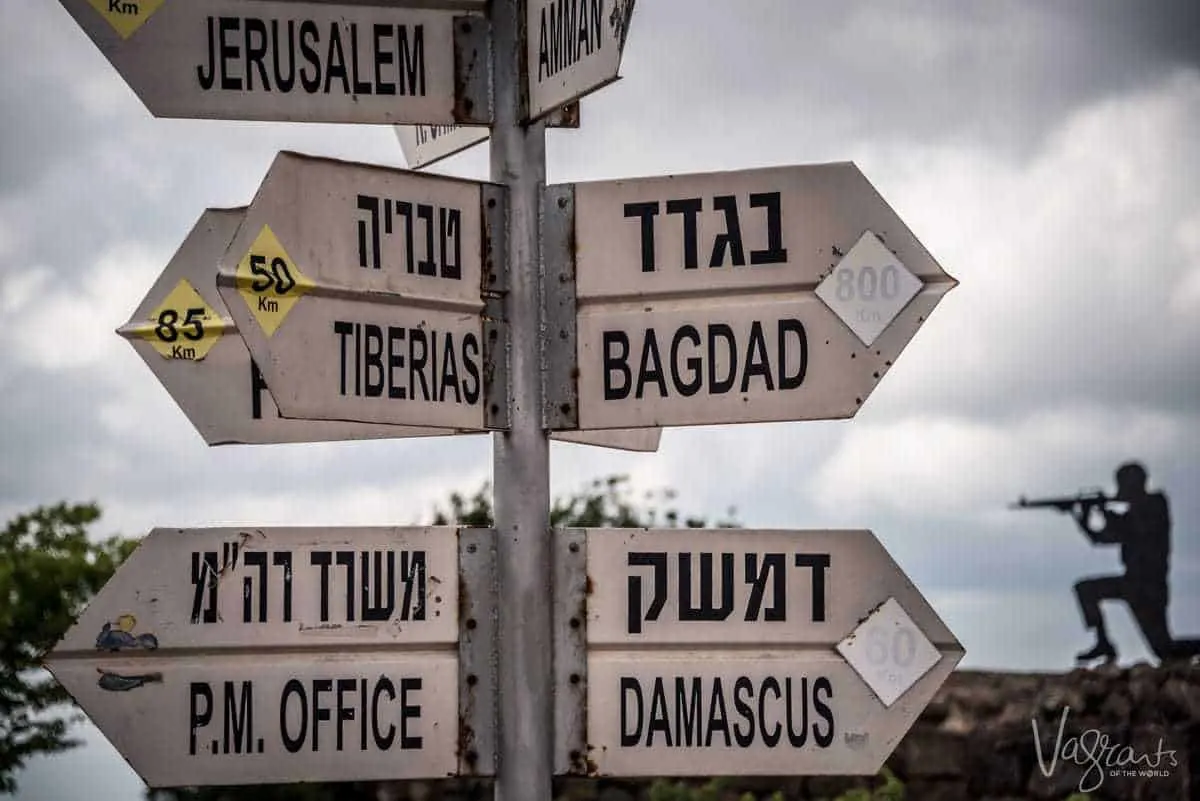
Beit Alfa Synagogue
Located at the foot of the northern slopes of the Gilboa mountains near Beit She’an the 5th-century Beit Alpha synagogue is famous for its miraculously well preserved mosaic floor. The intricate artistic detail vividly portrays the Binding of Isaac, the Zodiac, and the Temple of Jerusalem.
Visiting Beit Alfa National Park
Hours:
- Summer: Sunday – Thursday and Saturday: 8:00 am – 5:00 pm |Fridays and holiday eves: 8:00 am – 4:00 pm
- Winter: Sunday – Thursday and Saturday: 8:00 am – 4:00 pm |Fridays And holiday eves: 8:00 am – 3:00 pm
- New Year’s Eve and Passover Eve: 8:00 am – 1:00 pm
- Yom Kippur: 8:00 am – 1:00 pm
- The park entrance closes one hour before the times listed
Entry Fees:
- Adults: 22NIS
- Child: 9 NIS
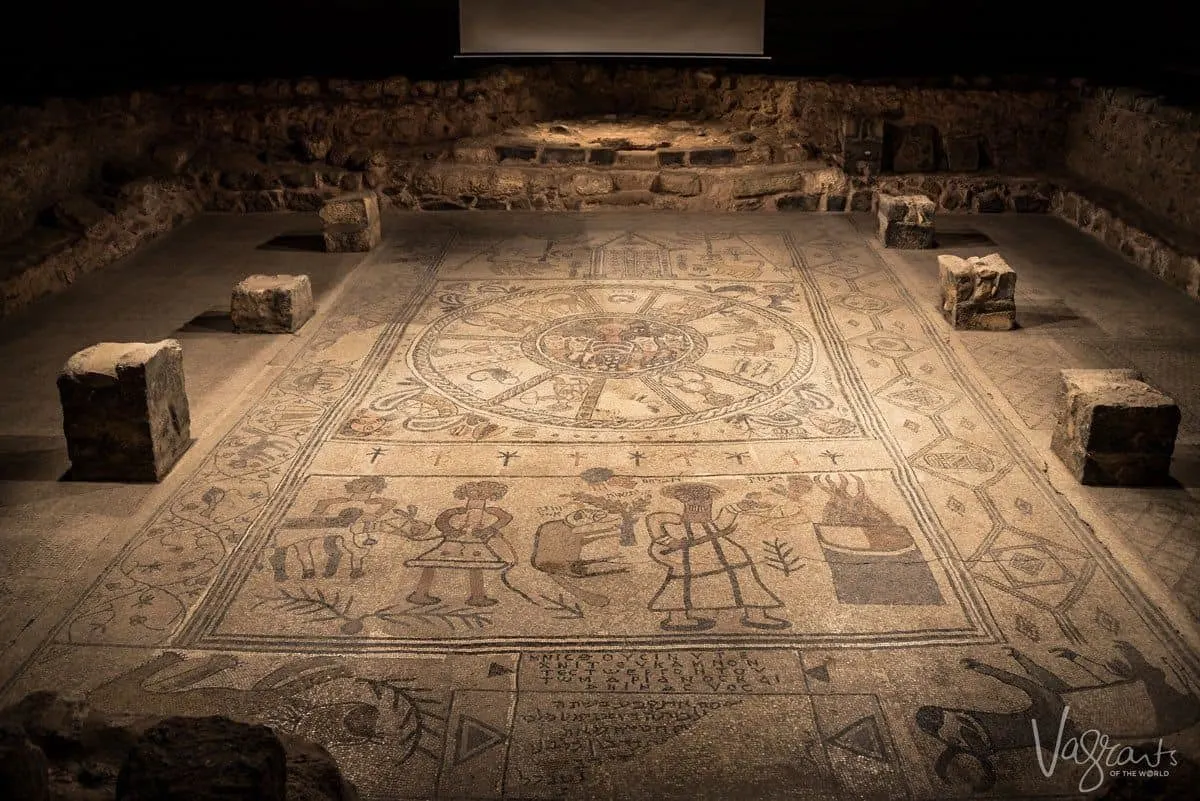
The Mount of Beatitudes
The Mount of the Beatitudes is believed to be the setting for Jesus’ most famous speech – the Sermon on the Mount.
Overlooking the northwestern shore of the Sea of Galilee, it offers beautiful vistas of the lake and across to the cliffs of the Golan Heights. The chapel and gardens of the Mount of the Beatitudes offer one of the most beautifully serene places in Israel.
Visiting the Mount of the Beatitudes
Opening Hours
Hours for the gardens on the Mount of Beatitudes and the Church
Summer: Every day – 8:30 am and 12:00 pm and 14:30 pm to 5:00 pm
Winter: opening hours are the same for winter. Closing time is at 4.00 pm
Entry
Entry is free although there is a charge for parking.
Ancient City of Caesarea Ruins
North of the country, halfway between Haifa and Tel Aviv on the Mediterranean coast, is Caesarea, named in honour of Augustus Caesar. A magnificent and prestigious port city established by King Herod the Great, during the Byzantine period. The port ruins include a restored Roman Amphitheatre which hosts concerts in the summer months, a Hippodrome horse racing arena, and impressive Roman Aqueducts.
Underwater Museum Dives
Caesarea National Park also has the world’s only underwater museum where you can dive through the underwater ruins of the ancient city.
The City of Caesarea
The Old City of Caesarea has a range of boutiques and restaurants. The new town boasts a luxurious neighbourhood of villas and the Caesarea Aqueduct Beach which is renowned as one of the best beaches in Israel.
Visiting Caesarea
Caesarea can be difficult to visit without a car, so many will visit by way of a tour to Caesarea.
Opening Hours:
- The museum is open- Summer April-September- 8.00 am – 6.00 pm | Winter until 4.00 pm.
- The site itself and restaurants remain open until later into the evening.
Entry Fees
- Adult: 38 NIS (~$10.50 USD)
- Child: 23 NIS (~$6.50 USD)
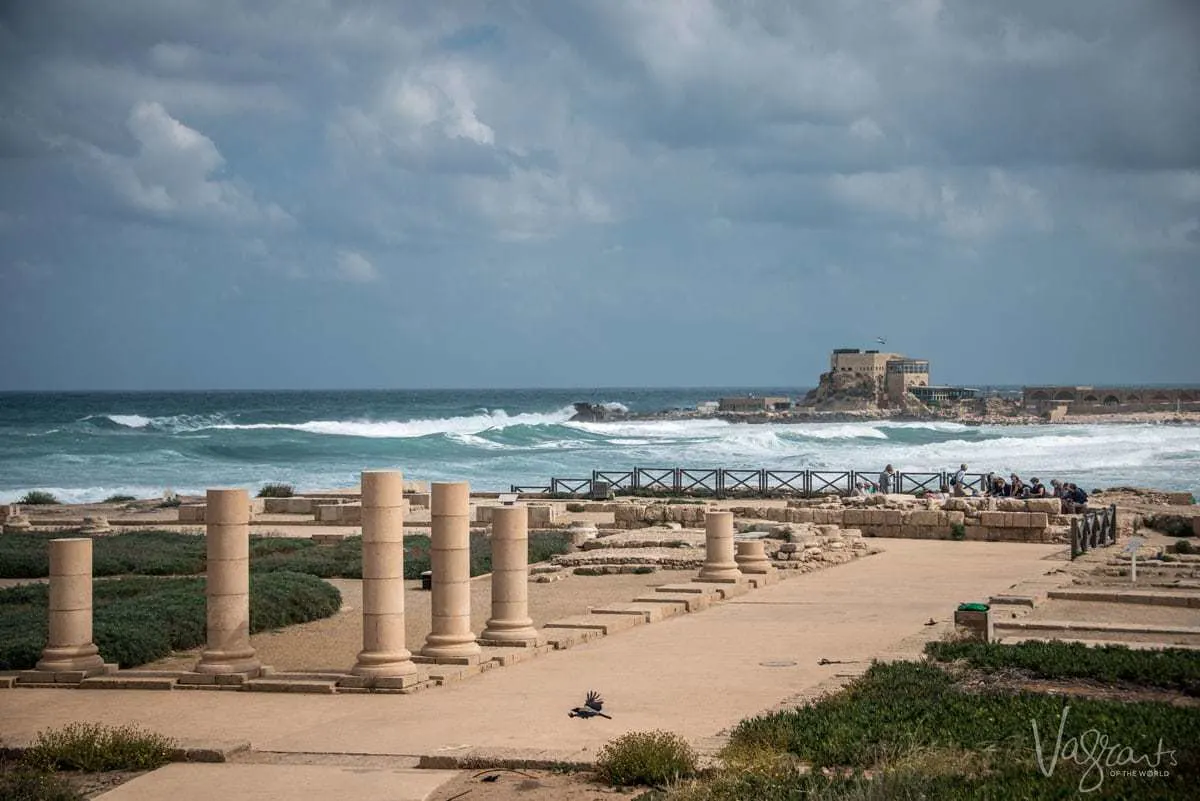
Atlit Detention Camp
During the British Mandate, “Illegal” Jewish immigrants fleeing from Nazi persecution in Europe were incarcerated at Atlit Detention Camp 20 km’s south of Haifa.
The site tells their astonishing story of survival and the conditions survivors endured during their transport to Israel.
Visiting Atlit Detention Camp
Hours:
- Sunday -Thursday: 9.00 am to 5.00 pm
- Friday: 9.00 am to 1.00 pm
Price:
- Adults: 32 NIS
- Child and Seniors: 27 NIS
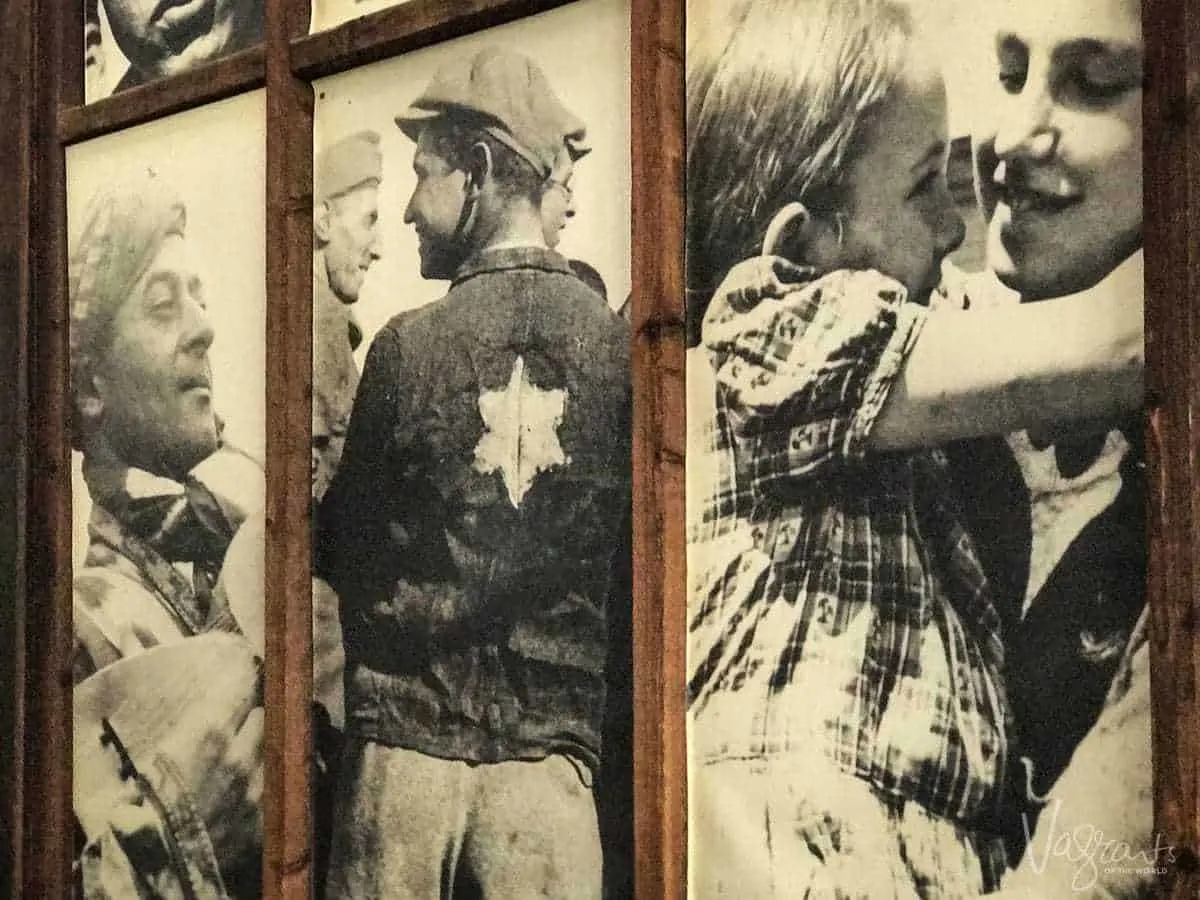
Beit She’an National Park
Beit She’an is one of the oldest cities in Israel. Located in the Galilee region of northern Israel where the Harod Valley and Jordan Valley meet, Beit She’an offers the most extensive archaeological site in Israel, with some of the best-preserved ruins in the Middle East.
Ongoing excavations and restorations in the large archaeological park dating back to the Roman and Byzantine period reveal an ancient city from the time of King Saul.
Visiting Beit She’an
Opening Hours
- April-September: Saturday-Thursday 8.00 am-5.00 pm, Friday 8am-4pm
- October-March: 8am-4pm
Entry Fees
- Adult: 38 NIS (~$10.50 USD)
- Children: 23 NIS (~$6.50 USD)
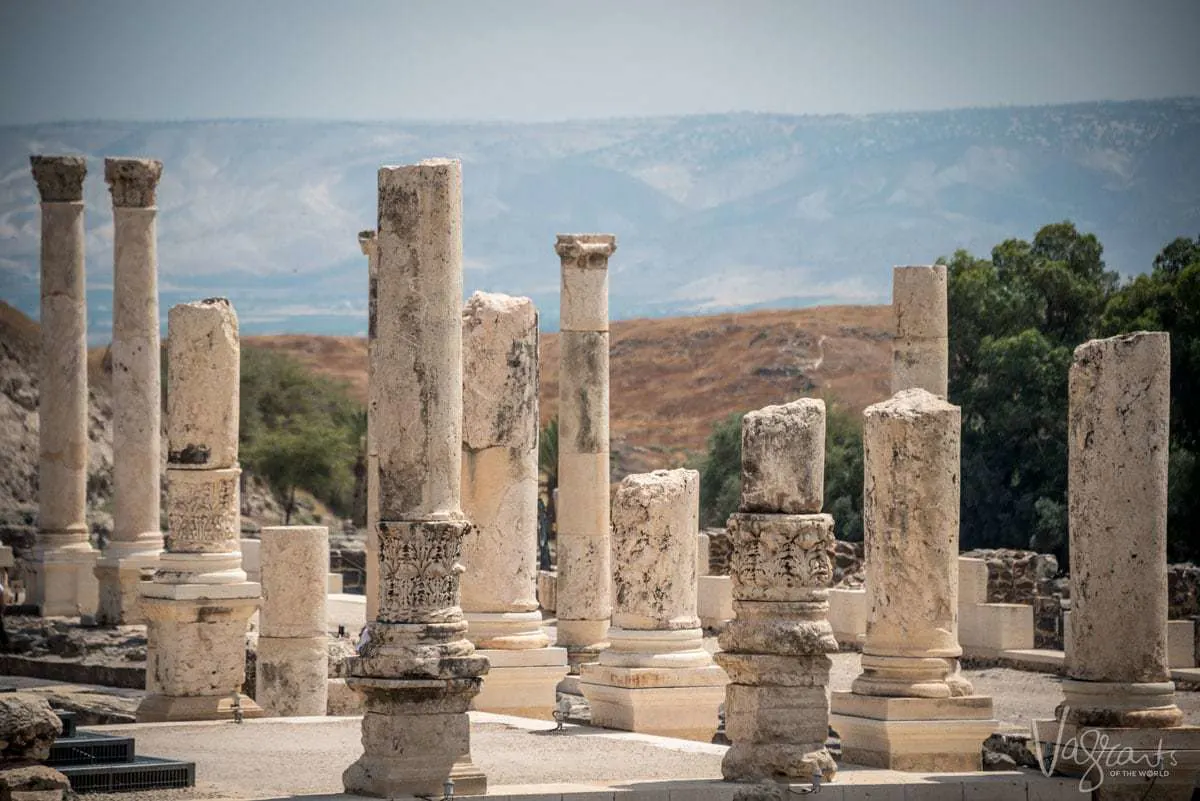
The Tastes of Israel
Israel has one of the most exciting culinary landscapes we have come across. Cuisine in Israel is predominantly a mix of Mediterranean and Middle Eastern influences. Although, immigration over the years has also had a significant influence on Israeli cuisine.
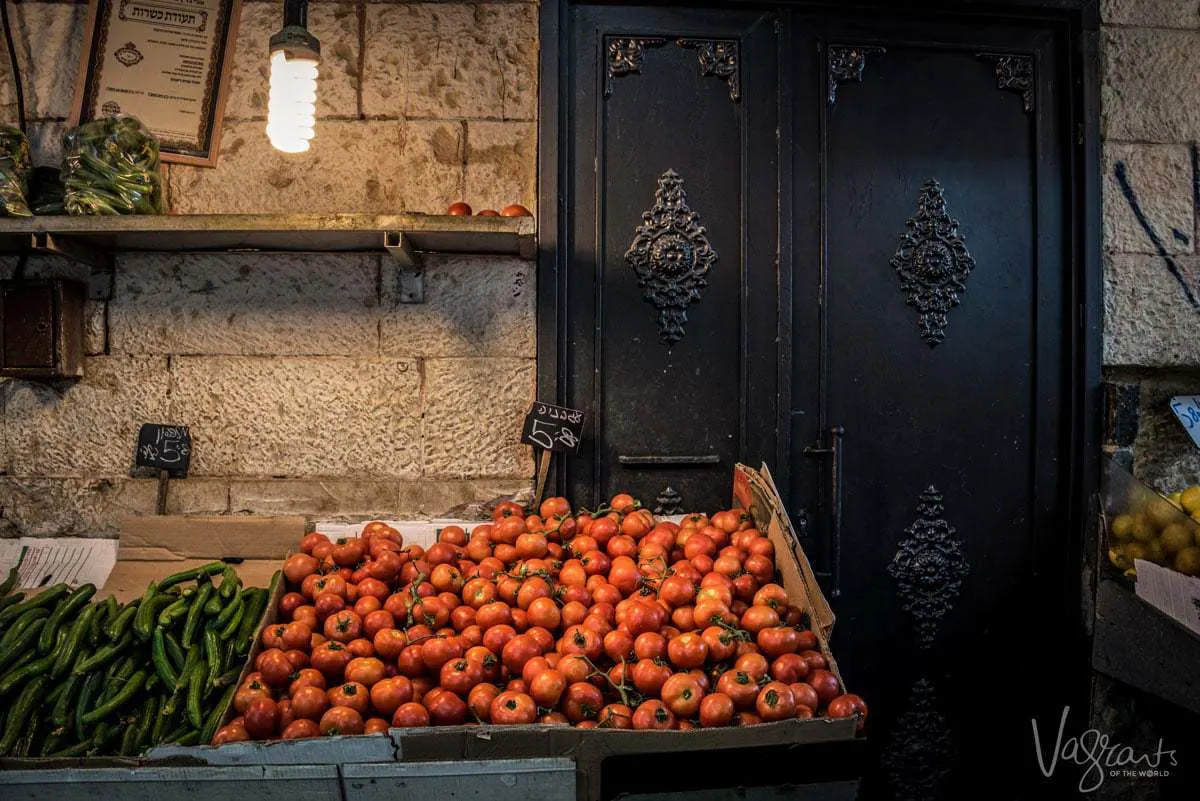
Dishes from Eastern and Central Europe, Russia, North Africa and Turkey have played a role in influencing cooking styles and fashions. Religious beliefs and holidays also play a vital role in Israel’s culinary repertoire.
For centuries spices have been traded as valuable commodities, they are no less important today, and integral to Middle Eastern cuisine.
30 Dishes You Must Try in Israel
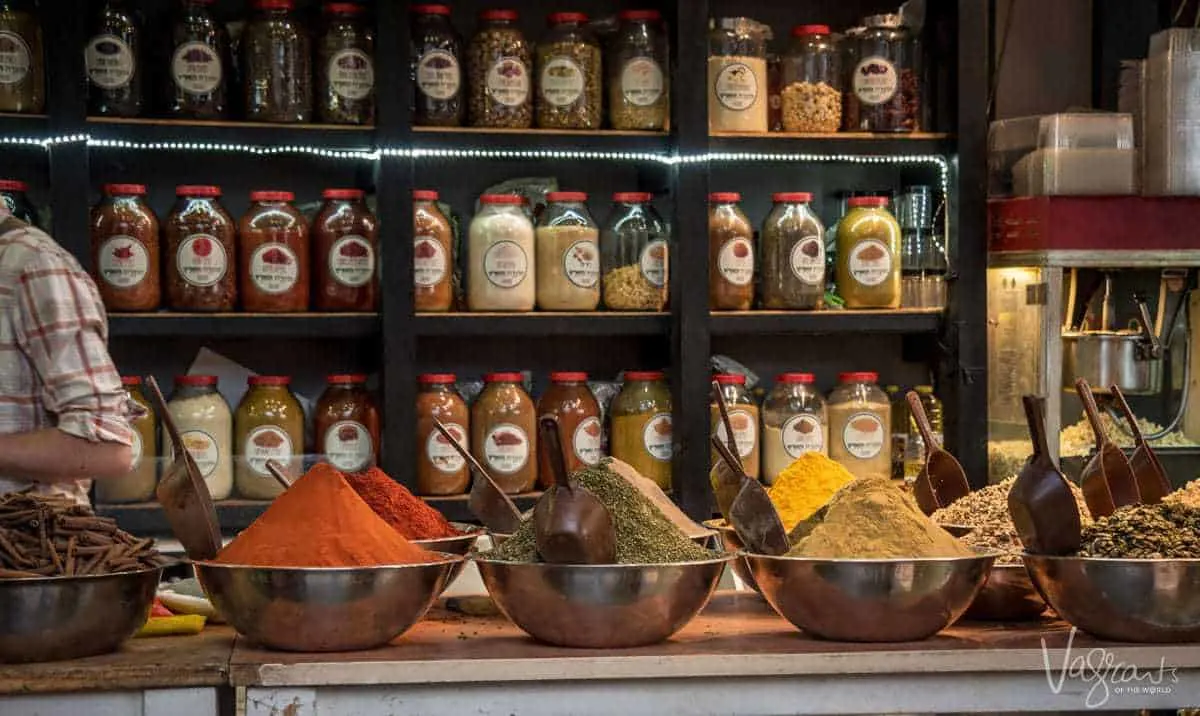
Small family restaurants in the Machane Yehuda Market cater to droves of local shoppers and tourists with large pots of home-cooked meals prepared as a daily menu.
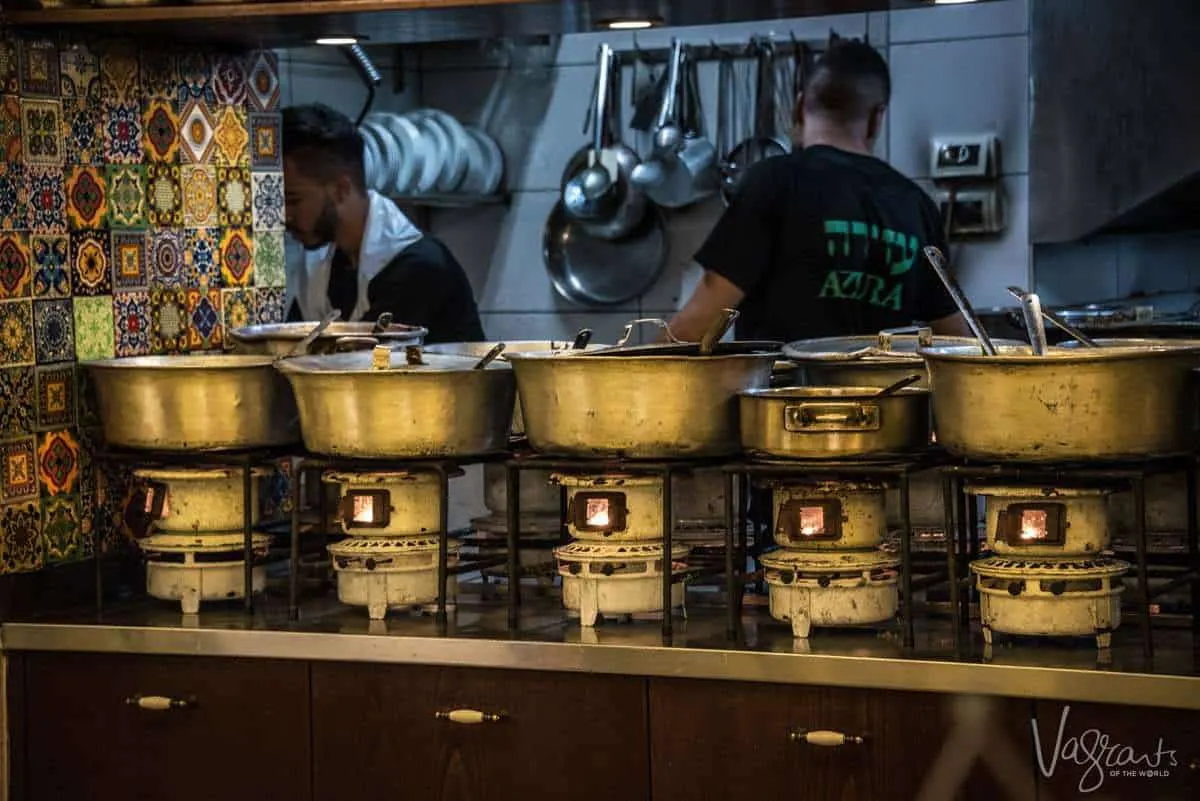
Bread
Like many cultures, bread is a staple bought fresh each day from the local baker. Middle Eastern and Mediterranean cuisine favour flatbread and pitas. You will often find bread and pastries sprinkled with Za’atar a favourite herb and spice mix used throughout the Middle East.
Small Dishes
Lots of small dishes are typical in Israel, like this lunch prepared in a Druze Village.
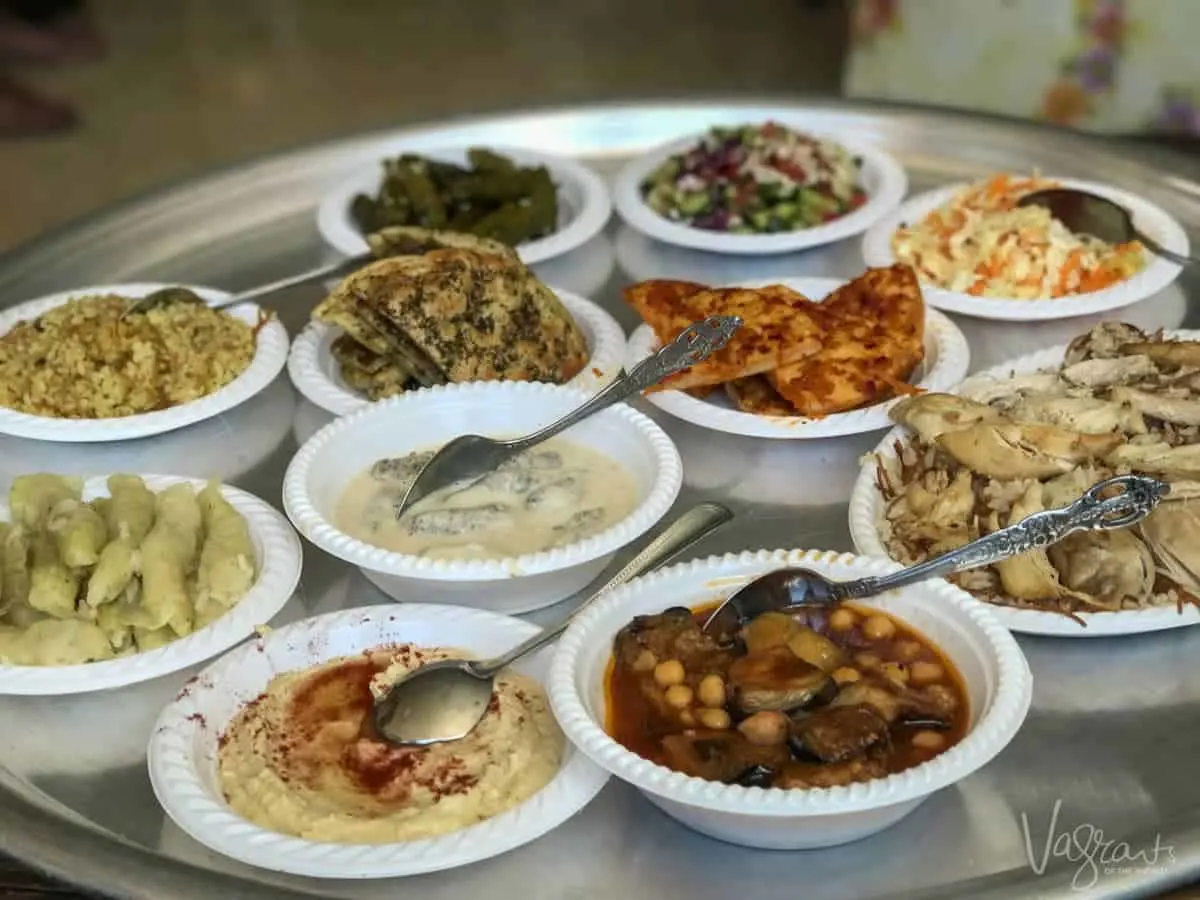
The Fascinating Culture of Israel
The culture of Israel is as eclectic as its people and history. While we may automatically look towards long-held traditions for insight into a culture, it is in the day to day life where a country’s culture shines through.
As a meeting place between East and West, Israel has a unique cultural atmosphere. Whether it be the daily life in an ancient marketplace, young people enjoying a beer at the new place to be seen or the devout stocking up on supplies in preparation for Shabbat. A blend of influence from the Middle East and traditions brought with immigrants from Europe brings together an interesting mix of cultures in Israel.
From inside the walls of the old city of Jerusalem to the heady nightlife of Tel Aviv, daily life in Israel is as normal as it is fascinating.
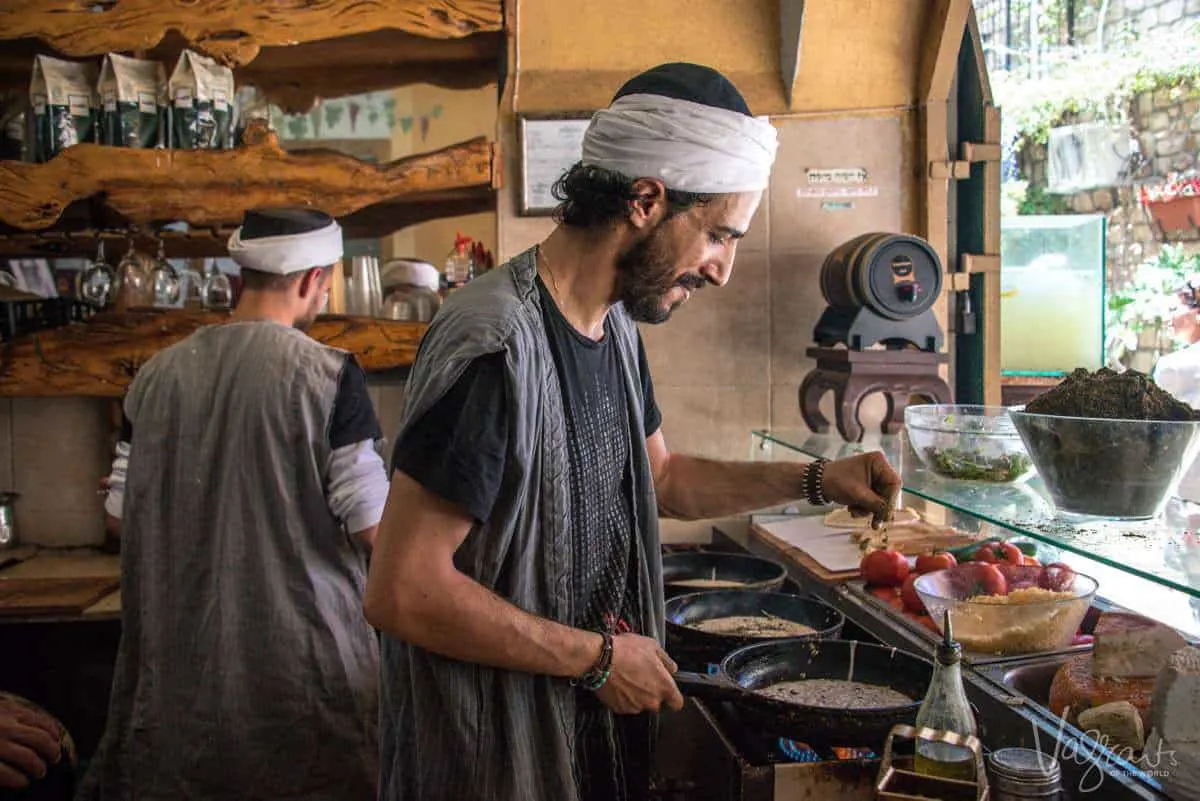
Israel Travel Facts
Is it Safe To Travel to Israel
Understandably, anyone planning to visit Israel wants to know; is it safe to travel to Israel. Despite the complexity of the current political situation, there are just so many fascinating places to visit in Israel; people aren’t shying away from travel to Israel just yet. In fact, travel to Israel is on the increase.
We would always advise caution and recommend keeping an eye on any travel warnings for Israel and be aware of any areas of potential risk.
We would also recommend considering a guided tour of Israel. Aside from having the added security of a local guide, an experienced guide will only enhance your experience. We go into this in more detail in our article about small group guided tours of Israel.
Languages: Hebrew, Arabic, English. Most people in Israel speak very good English.
Currency: New Israel Shekel (NIS)
Best Time to Visit Israel:
- Low Season: Winter – Dec–Feb.
- Shoulder Season: Fall – Oct, Nov | Spring – Mar-Jun.
- High Season – Summer- Jul- Aug.
Always remember the best time to visit Israel will be dependant on what you want to see and do. But always be mindful when planning your trip to Israel that you take into account the major Jewish celebrations such as Passover, Hanukkah and Yom Kippur.
The best time to visit Jerusalem
April through to May and from October through to November is the best time to visit Jerusalem. The weather is milder and there are fewer tourists which makes the city much more enjoyable and the main sites easier to access.
The best time to visit Tel Aviv
March through to April and September through to November is the best time to visit Tel Aviv. Once again the weather will be more agreeable and fewer crowds.
Cheapest time to visit Israel
Spring and Fall are most probably the most reasonably priced times to visit Israel. These times are quieter tourist wise and hotel prices are cheaper. Airfares are more reasonable from November to early March.
Main Airport: Ben-Gurion Airport (Tel Aviv)
How we Travelled Israel.
We spent four nights in Jerusalem and then joined a small group tour of Israel – The 12 Day Israel, Ancient & Modern Culture Tour with Discovery Tours by Gate 1 Travel.
Prices start at $2349 for land only packages and $3319 for land and air if travelling to Israel from the US. Check Discovery Tours by Gate 1 Travel for a more comprehensive list of pricing and inclusions.

